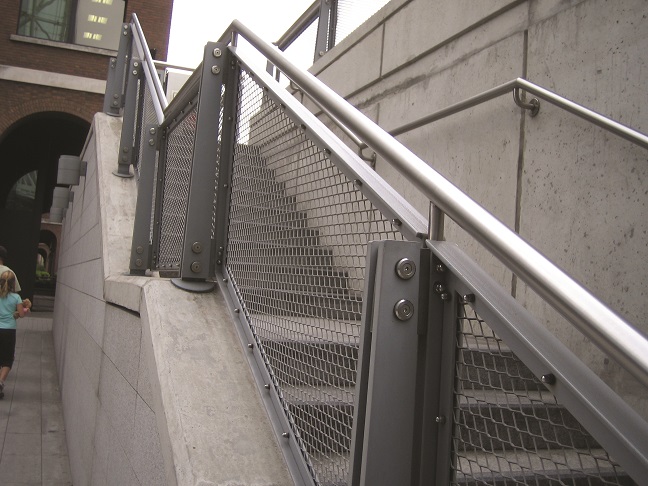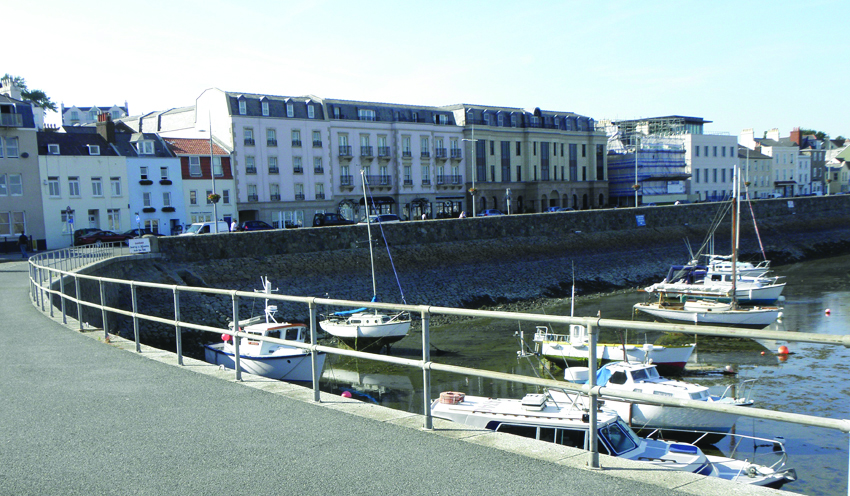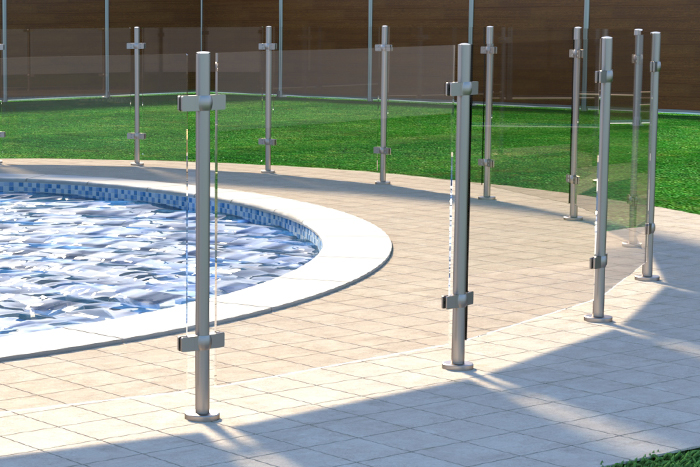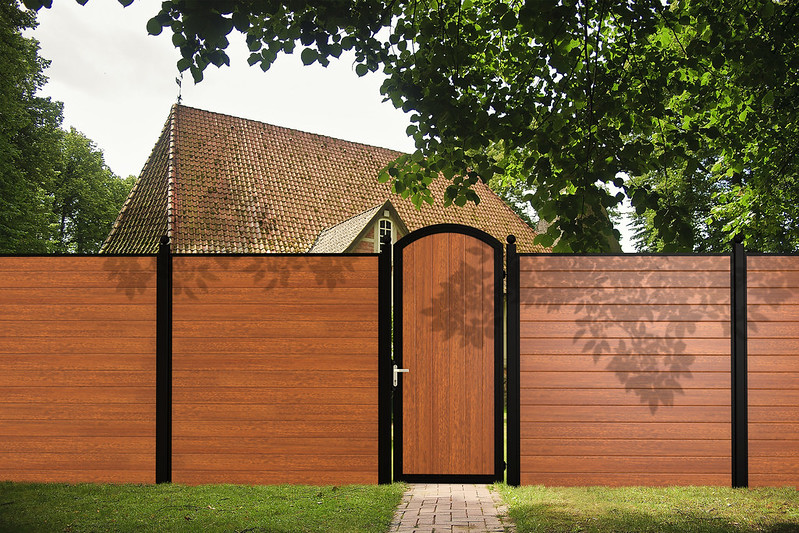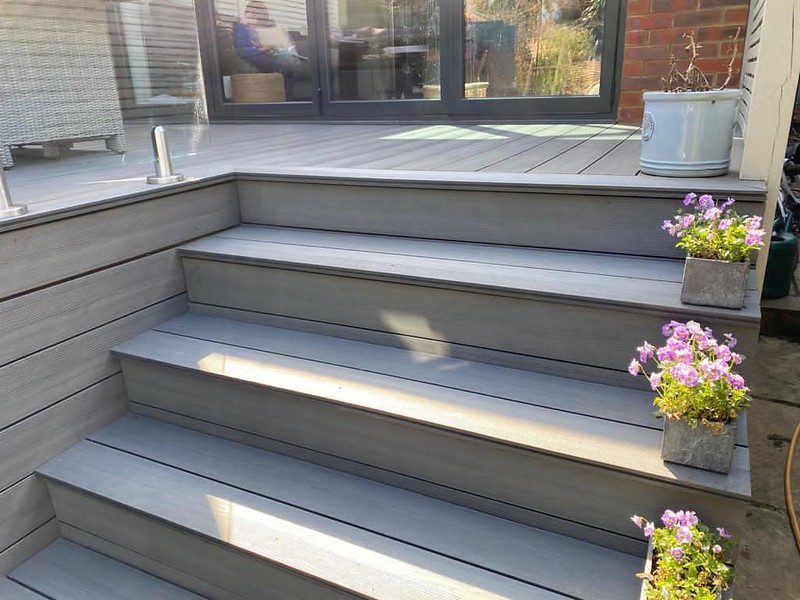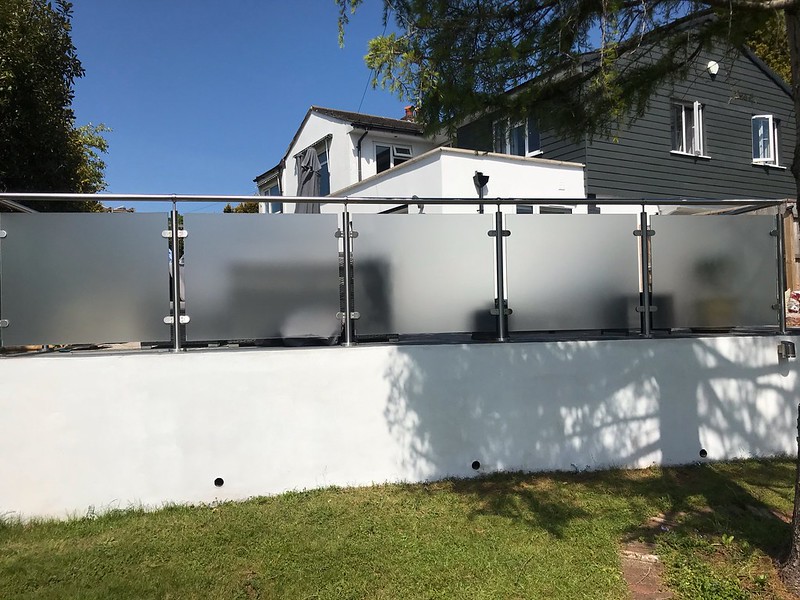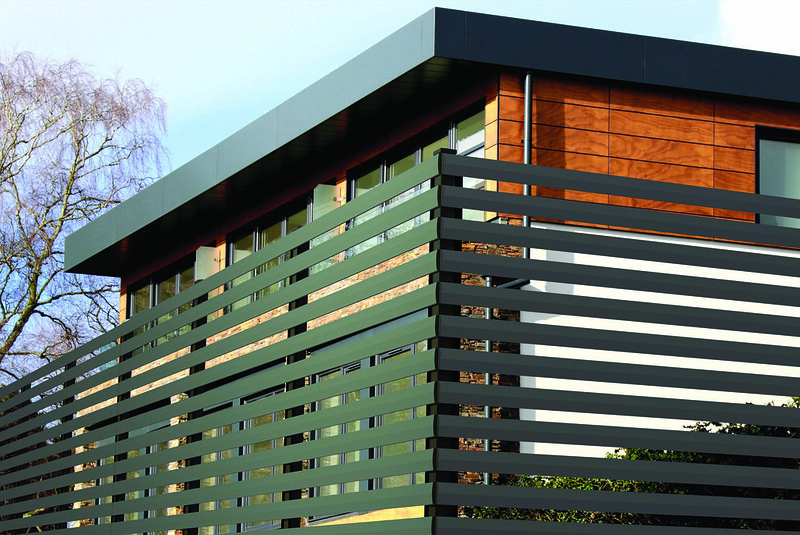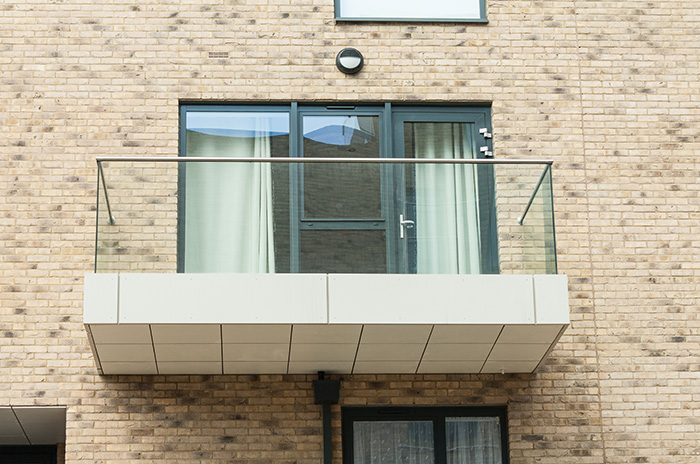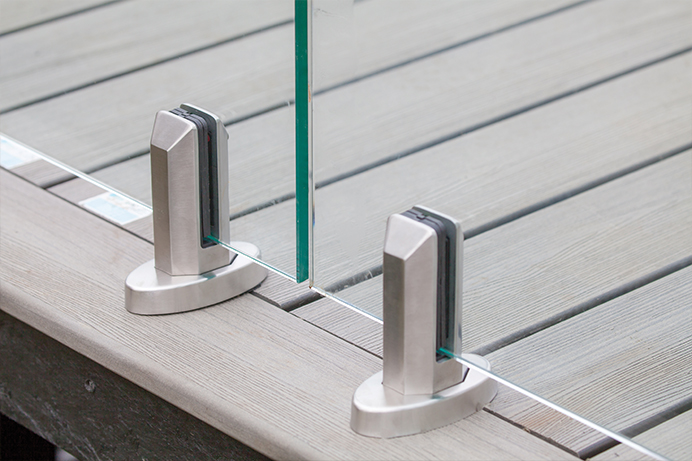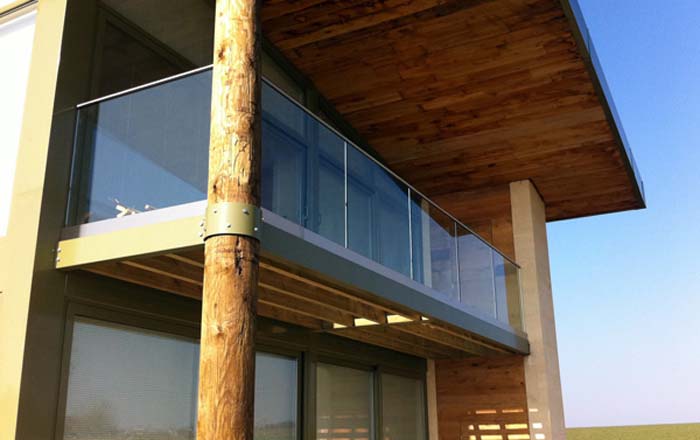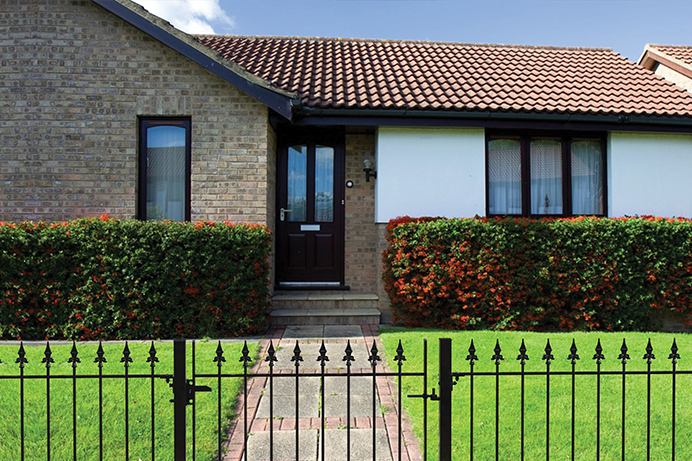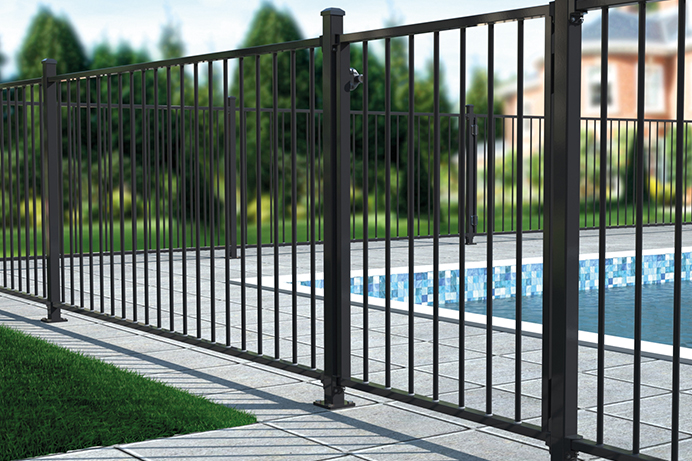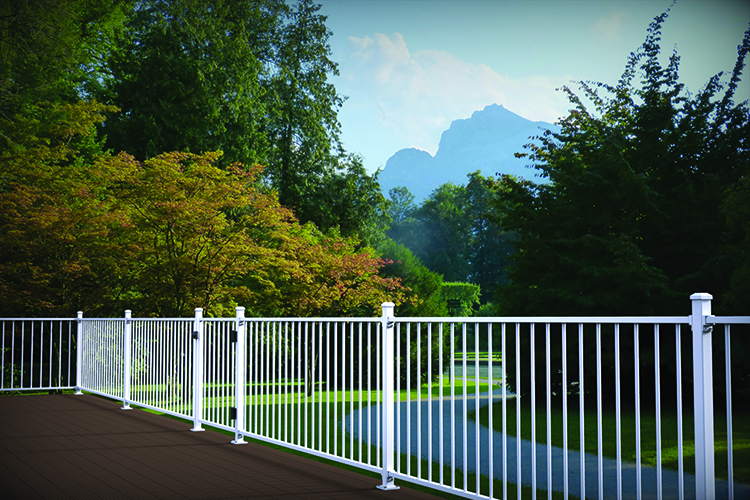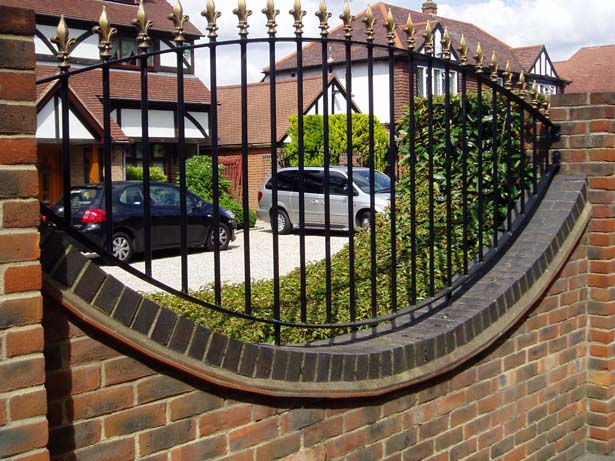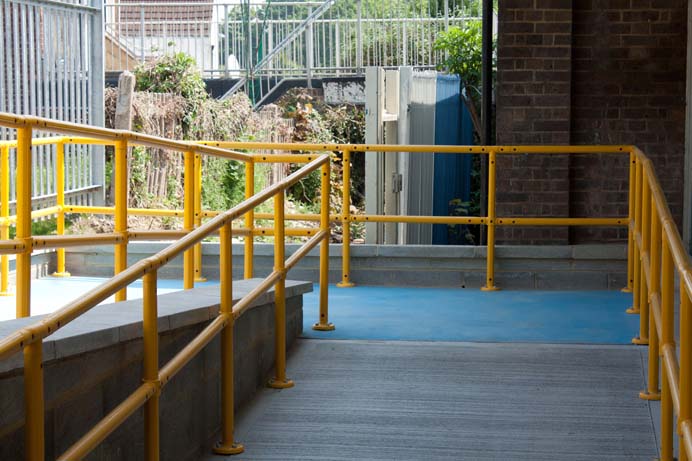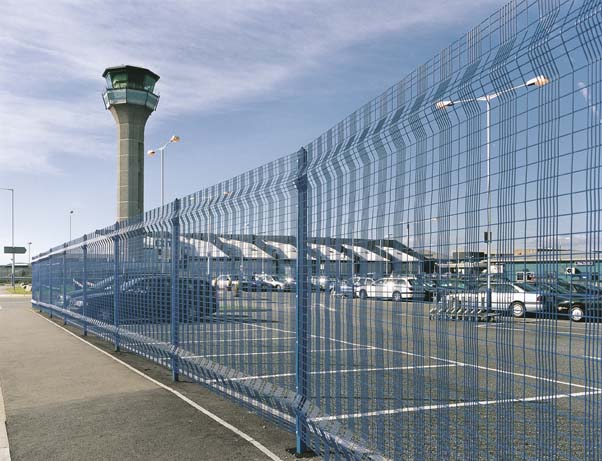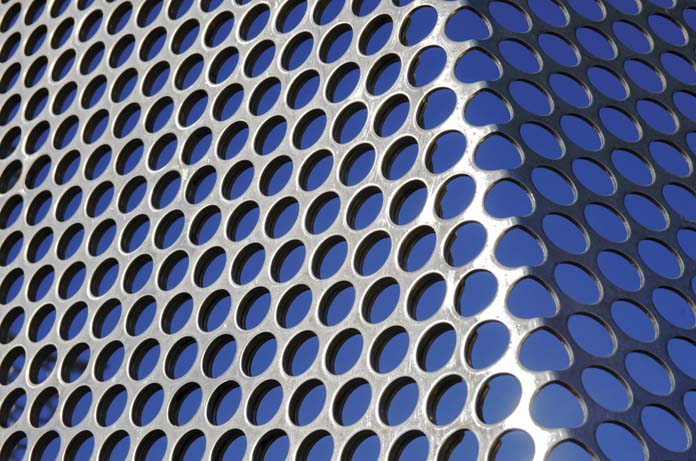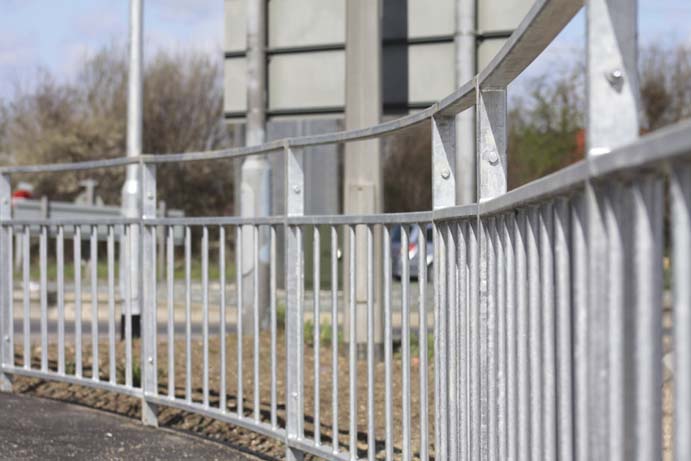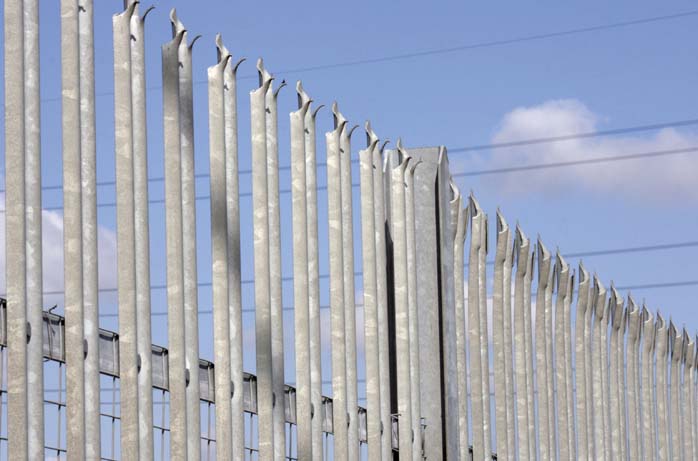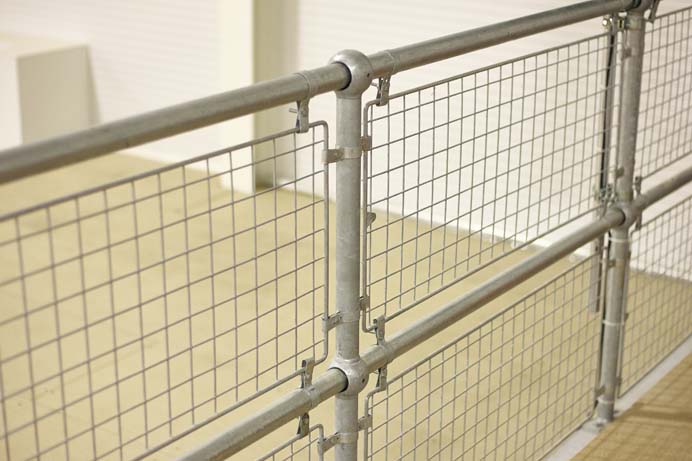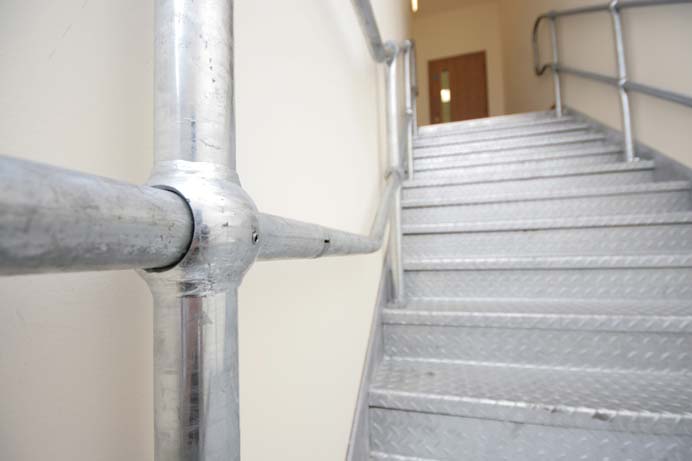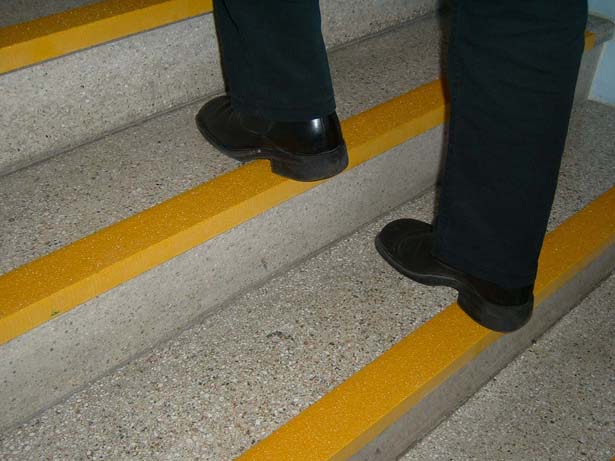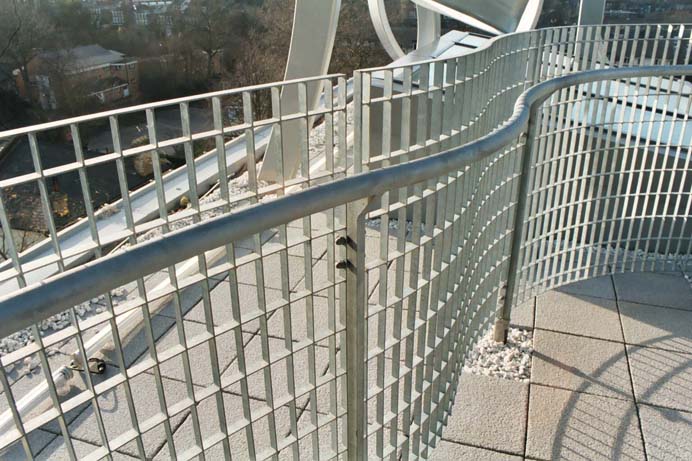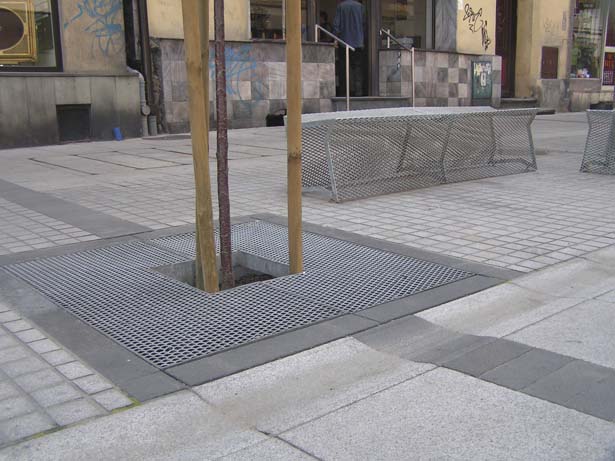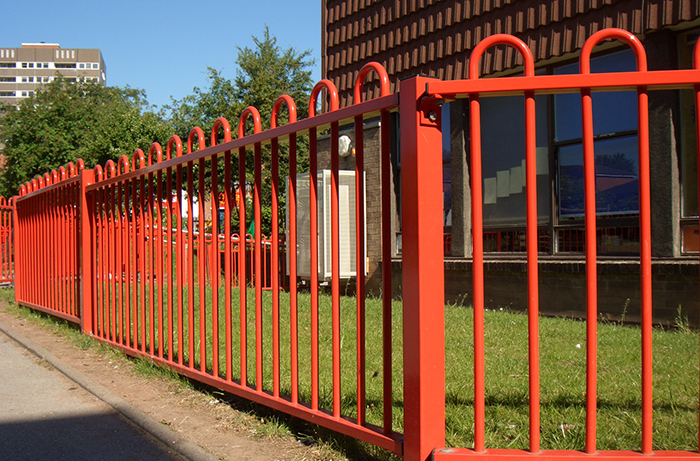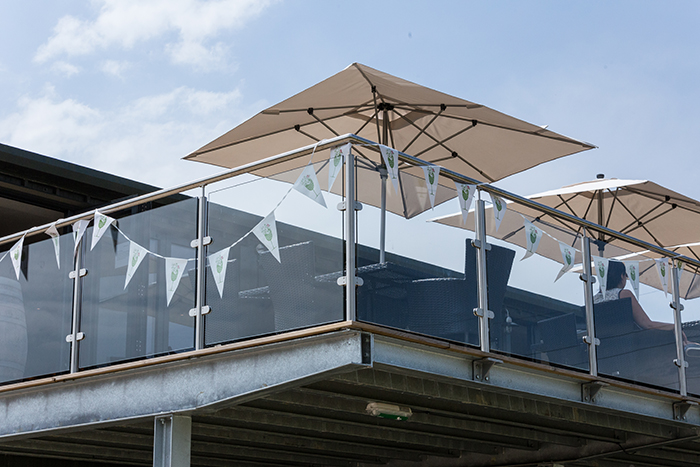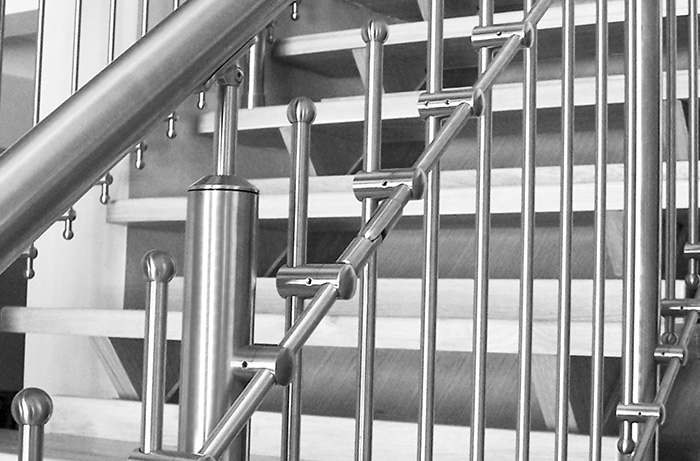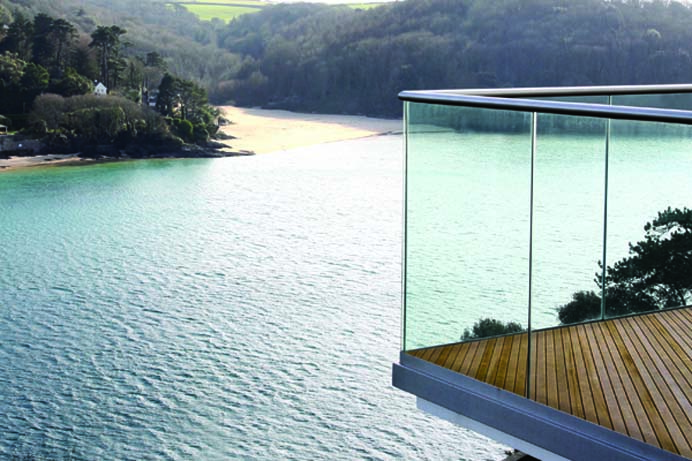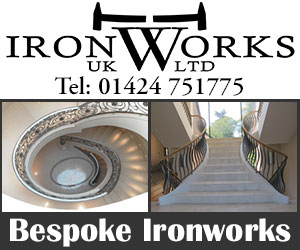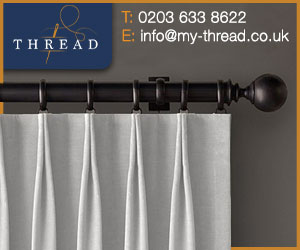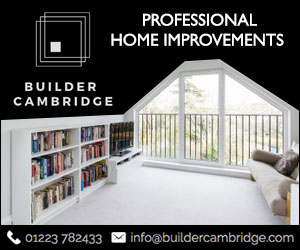Address
Condor Road
Quarry Hill Industrial Estate
Quarry Hill Industrial Estate
DE7 4RE
England UK
Opening Hours
Contact your branch
About F.H. Brundle - Ilkeston
The UK's Wrought Iron Components Specialists
F. H. Brundle is the UK’s largest stockist of wrought iron components, welded wire mesh and expanded and perforated metal available from stock for immediate delivery. Other product ranges include stainless steel handrail components, tube clamps and galvanised tube, industrial steel flooring and GRP and tactile flooring. In addition to gate hardware and CAME gate automation equipment F. H. Brundle is also one of the largest steel sections stockholders in the UK.
Our transport fleet has over 60 operating across the UK, including smaller transit vans for deliveries to customers with restricted access. Artic lorries that can carry up to 44 tonnes, operate overnight to feed the branches from our Midlands distribution hub, giving us complete control on delivering anything from the smallest package, to our largest steel section.
We offer extremely competitive pricing, compatible with quality and service.
Steel
As one of the UK's largest steel sections stockholder for light steel construction applications, we can deliver whatever you need throughout the UK in quantities large or small. Choose from our comprehensive stock of square, flat, angle or circular hollow sections as well as round steel bars, universal steel columns and beams, steel channels, sheets and plates.
Wrought Iron Components
Our wrought iron component range enables metalworkers, blacksmiths, fabricators or anyone involved in the supply of gates, railings or decorative ironwork, to create high quality wrought iron products at low cost. These include: wrought iron railheads, bars, bushes, collars, scrolls, spheres, and much more to complement any design.
Gate Hardware
F.H. Brundle supplies a huge range of gate hardware products designed to assist the metal fabricator in the manufacture of gates, including: Locinox gate locks, combination locks hinges, gate closers, jockey wheels and casters, cantilever gate components and much more.
Sliding Door Gear
Our Sliding Door Hardware is suitable for doors weighing from 75 to 500kg and designed to suit many sliding door systems and applications, ranging from small domestic and commercial doors to industrial and agricultural doors.
Gate Automation
Installing electric gate openers to gates not only allows them to be fully automated therefore providing easier and more convenient access control; gate automation systems can also offer a genuine solution to security issues by creating a protective barrier around premises perimeters.
Mesh
We are one of the UK's leading mesh supplier, including welded and woven wire mesh and expanded and perforated metal suitable for most application requirements.
Flooring & Stair Treads
Open Steel Flooring and Stair Treads come in a range of materials and finishes depending on application requirements.
Handrailing
Our extensive range of handrailing systems and components include tube clamps, handrail standards, frameless glass balustrade, stainless steel handrail components, aluminium railings, Juliet balconies, glass clamps, DDA handrail and so much more.
Fencing
We stock the largest range of security fencing and perimeter security in the UK, so whether your application is industrial, commercial or agricultural, we will have a security fencing system suitable to your requirements.
Fixings
Our fixings and fastenings section provides many solutions to quickly and efficiently help install our range of products. We stock everything from screws and nails to adhesives, solvents and metal riveters.
F. H. Brundle is the UK’s largest stockist of wrought iron components, welded wire mesh and expanded and perforated metal available from stock for immediate delivery. Other product ranges include stainless steel handrail components, tube clamps and galvanised tube, industrial steel flooring and GRP and tactile flooring. In addition to gate hardware and CAME gate automation equipment F. H. Brundle is also one of the largest steel sections stockholders in the UK.
Our transport fleet has over 60 operating across the UK, including smaller transit vans for deliveries to customers with restricted access. Artic lorries that can carry up to 44 tonnes, operate overnight to feed the branches from our Midlands distribution hub, giving us complete control on delivering anything from the smallest package, to our largest steel section.
We offer extremely competitive pricing, compatible with quality and service.
- Access Flooring
- Acoustic Insulation
- Aluminium Facades
- Anti Slip Products
- Architectural Hardware
- Architectural Ironmongers
- Automated Gates
- Cold Rolled Steel
- Door & Gate Operating Equipment
- Exhibition Metalwork
- Fall Prevention
- Fence, Gate & Barrier Suppliers
- Fire Escapes
- Floor Protection Products
- Flooring Materials
- Flooring Supplies
- Guards and Grilles
- Industrial Walkways
- Insulation Panels & Facades
- Lightweight Steel
- Lock Suppliers
- Mezzanine Flooring
- Non-Slip Products
- Nuts, Bolts & Fixings
- Railings & Guard Rails
- Safety Barriers
- Site Security
- Stainless Steel
- Staircase Balustrade and Handrail
- Steel Suppliers
- Structural Steel Suppliers
- Wire Suppliers
Steel
As one of the UK's largest steel sections stockholder for light steel construction applications, we can deliver whatever you need throughout the UK in quantities large or small. Choose from our comprehensive stock of square, flat, angle or circular hollow sections as well as round steel bars, universal steel columns and beams, steel channels, sheets and plates.
Wrought Iron Components
Our wrought iron component range enables metalworkers, blacksmiths, fabricators or anyone involved in the supply of gates, railings or decorative ironwork, to create high quality wrought iron products at low cost. These include: wrought iron railheads, bars, bushes, collars, scrolls, spheres, and much more to complement any design.
Gate Hardware
F.H. Brundle supplies a huge range of gate hardware products designed to assist the metal fabricator in the manufacture of gates, including: Locinox gate locks, combination locks hinges, gate closers, jockey wheels and casters, cantilever gate components and much more.
Sliding Door Gear
Our Sliding Door Hardware is suitable for doors weighing from 75 to 500kg and designed to suit many sliding door systems and applications, ranging from small domestic and commercial doors to industrial and agricultural doors.
Gate Automation
Installing electric gate openers to gates not only allows them to be fully automated therefore providing easier and more convenient access control; gate automation systems can also offer a genuine solution to security issues by creating a protective barrier around premises perimeters.
Mesh
We are one of the UK's leading mesh supplier, including welded and woven wire mesh and expanded and perforated metal suitable for most application requirements.
Flooring & Stair Treads
Open Steel Flooring and Stair Treads come in a range of materials and finishes depending on application requirements.
Handrailing
Our extensive range of handrailing systems and components include tube clamps, handrail standards, frameless glass balustrade, stainless steel handrail components, aluminium railings, Juliet balconies, glass clamps, DDA handrail and so much more.
Fencing
We stock the largest range of security fencing and perimeter security in the UK, so whether your application is industrial, commercial or agricultural, we will have a security fencing system suitable to your requirements.
Fixings
Our fixings and fastenings section provides many solutions to quickly and efficiently help install our range of products. We stock everything from screws and nails to adhesives, solvents and metal riveters.
Gallery
News
Paul Smith, Head of Marketing at F.H. Brundle, explains the government’s proposed changes to Part M of Building Regulations.
Between September and December last year, the government held a consultation on how they could improve accessibility standards across the UK.
The fact such an exercise went ahead despite the huge disruptions caused by the pandemic was telling – aging is a huge issue for the UK, and ministers know it.
In 2019, there were nearly 12 million people aged over 65 in the UK, 1.6 million over 85, and more than 14,000 aged 100 or above.
In other words, people over pension age – and therefore more likely to need public and private buildings to be accessible – were already a significant part of the population.
But thanks to massive advances in modern medicine, people are living longer than ever – and in the decades ahead, Britain’s elderly population is set to substantially increase.
By 2030, we expect one in five people to be 65 or over. The 85 and above bracket is the fastest growing demographic of all – on course to double in size by mid-2041, and triple by 2066.
What’s more, 45% of people over 65 are disabled, compared to just 15% of the younger population.
Over the next fifty years, that means that public spaces and private homes will need to be comprehensively adapted if they’re going to remain accessible to millions of people around the country.
Improving accessibility standards
As it stands at the moment, Part M of Building Regulations sets minimum access standards for all new buildings.
Category 1 sets out basic standards for accessibility for all new homes. Category 2 is more stringent – laying out higher standards that planning authorities can decide need to be followed in certain circumstances.
Category 3 specifically deals with adjustments that have to be made to buildings and outdoor spaces to make them accessible for wheelchair users.
Again, it comes into force at the discretion of local government, who may decide that a certain proportion of homes in the area have to meet the heightened standards.
In its recent consultation, the government sought to gain opinions on five different options for strengthening accessibility standards in the UK.
The first was simply ‘wait and see’ – in 2019, the government implemented a number of changes in its revised National Planning Policy Framework, and one potential course of action is to wait to see what impact that has on the delivery of accessible buildings.
The second would take the increased accessibility standards that are already part of Category 2 of Part M – but currently optional – and make them the new minimum for all new builds, except where it’s impractical.
Option 3 would go further, removing Part M Category 1 altogether, and requiring all new builds to at least have the accessible and adaptable features of a Category 2 property.
Option 4 would make Category 2 the new base standard, but also set a fixed percentage of homes that would have to meet Category 3, and therefore be adapted for wheelchair users.
Finally, Option 5 would seek to keep Part M Category 1, but make it more stringent.
Change is coming
So whatever option ministers eventually choose – the consultation closed in December, and the government is currently considering the responses it received – change is coming.
Sometimes, you see speculation about what the high-tech, accessible buildings of the future might look like. There are companies who already provide voice-activated doors and cupboards, kitchens and bathrooms with appliances that rise and fall to suit the user, and a whole range of other futuristic accessibility tech.
But while I think the accessible buildings of the future are likely to include these sorts of advances, on the whole I think we’ll just see a much broader application of the basics – ramps, handrails, anti-slip flooring, and other products that have been in use throughout the public and private sector for decades.
At F.H. Brundle, we’re continuing to see very healthy demand for our selection of handrails designed to meet the requirements of Part M, for example.
Our DDA range conforms to the requirement for smooth continuous handrail using 42.4mm galvanised tube, and includes Warmagrip™, our warm to the touch hand railing and component system, that meets Part M.
The high quality PVC coating ensures minimum heat conductivity away from the hand, and removes the need for thermal painting or powder coating.
With a mix of high-tech innovation, and quality traditional accessibility products like these, we can make Britain’s built environment safe and welcoming for everyone to enjoy.
For the full details of current Part M standards and the proposals for enhancing them, please see the ‘Raising accessibility standards for new homes’ consultation paper, available on the government’s website.
Between September and December last year, the government held a consultation on how they could improve accessibility standards across the UK.
The fact such an exercise went ahead despite the huge disruptions caused by the pandemic was telling – aging is a huge issue for the UK, and ministers know it.
In 2019, there were nearly 12 million people aged over 65 in the UK, 1.6 million over 85, and more than 14,000 aged 100 or above.
In other words, people over pension age – and therefore more likely to need public and private buildings to be accessible – were already a significant part of the population.
But thanks to massive advances in modern medicine, people are living longer than ever – and in the decades ahead, Britain’s elderly population is set to substantially increase.
By 2030, we expect one in five people to be 65 or over. The 85 and above bracket is the fastest growing demographic of all – on course to double in size by mid-2041, and triple by 2066.
What’s more, 45% of people over 65 are disabled, compared to just 15% of the younger population.
Over the next fifty years, that means that public spaces and private homes will need to be comprehensively adapted if they’re going to remain accessible to millions of people around the country.
Improving accessibility standards
As it stands at the moment, Part M of Building Regulations sets minimum access standards for all new buildings.
Category 1 sets out basic standards for accessibility for all new homes. Category 2 is more stringent – laying out higher standards that planning authorities can decide need to be followed in certain circumstances.
Category 3 specifically deals with adjustments that have to be made to buildings and outdoor spaces to make them accessible for wheelchair users.
Again, it comes into force at the discretion of local government, who may decide that a certain proportion of homes in the area have to meet the heightened standards.
In its recent consultation, the government sought to gain opinions on five different options for strengthening accessibility standards in the UK.
The first was simply ‘wait and see’ – in 2019, the government implemented a number of changes in its revised National Planning Policy Framework, and one potential course of action is to wait to see what impact that has on the delivery of accessible buildings.
The second would take the increased accessibility standards that are already part of Category 2 of Part M – but currently optional – and make them the new minimum for all new builds, except where it’s impractical.
Option 3 would go further, removing Part M Category 1 altogether, and requiring all new builds to at least have the accessible and adaptable features of a Category 2 property.
Option 4 would make Category 2 the new base standard, but also set a fixed percentage of homes that would have to meet Category 3, and therefore be adapted for wheelchair users.
Finally, Option 5 would seek to keep Part M Category 1, but make it more stringent.
Change is coming
So whatever option ministers eventually choose – the consultation closed in December, and the government is currently considering the responses it received – change is coming.
Sometimes, you see speculation about what the high-tech, accessible buildings of the future might look like. There are companies who already provide voice-activated doors and cupboards, kitchens and bathrooms with appliances that rise and fall to suit the user, and a whole range of other futuristic accessibility tech.
But while I think the accessible buildings of the future are likely to include these sorts of advances, on the whole I think we’ll just see a much broader application of the basics – ramps, handrails, anti-slip flooring, and other products that have been in use throughout the public and private sector for decades.
At F.H. Brundle, we’re continuing to see very healthy demand for our selection of handrails designed to meet the requirements of Part M, for example.
Our DDA range conforms to the requirement for smooth continuous handrail using 42.4mm galvanised tube, and includes Warmagrip™, our warm to the touch hand railing and component system, that meets Part M.
The high quality PVC coating ensures minimum heat conductivity away from the hand, and removes the need for thermal painting or powder coating.
With a mix of high-tech innovation, and quality traditional accessibility products like these, we can make Britain’s built environment safe and welcoming for everyone to enjoy.
For the full details of current Part M standards and the proposals for enhancing them, please see the ‘Raising accessibility standards for new homes’ consultation paper, available on the government’s website.
F.H. Brundle have significantly expanded their selection of GRP flooring products, bringing more choice to customers across multiple sectors who need highly safe, versatile and effective flooring products.
New additions to the company’s extensive range include GRP 6m long anti-slip decking planks, suitable for a wide array of applications such as mezzanine floors, pedestrian bridges and walkways, decking and flooring, as well as flood defence barriers.
Five robust and slip-resistant GRP floor grating products are also available, offering strong corrosion-resistance, a high weight-to-strength ratio and an integral quartz grit top.
These come in four colours – green, grey, yellow and sand.
In addition, Brundle supply GRP tread covers with contrasting nosing to aid visibility, landing covers and nosing.
“GRP is an extremely versatile material with a whole range of benefits,” comments Paul Smith, F.H. Brundle Head of Marketing.
“It’s strong, while remaining very lightweight. It’s an affordable alternative to other materials, and with a lower residual value, meaning its less likely to be stolen – and it’s both non-conductive and fire retardant, so great for use in high risk areas.
“It’s resistant to both weathering and corrosion – and taken together, that makes it an outstanding choice for a whole range of uses throughout the public and private sectors.
New additions to the company’s extensive range include GRP 6m long anti-slip decking planks, suitable for a wide array of applications such as mezzanine floors, pedestrian bridges and walkways, decking and flooring, as well as flood defence barriers.
Five robust and slip-resistant GRP floor grating products are also available, offering strong corrosion-resistance, a high weight-to-strength ratio and an integral quartz grit top.
These come in four colours – green, grey, yellow and sand.
In addition, Brundle supply GRP tread covers with contrasting nosing to aid visibility, landing covers and nosing.
“GRP is an extremely versatile material with a whole range of benefits,” comments Paul Smith, F.H. Brundle Head of Marketing.
“It’s strong, while remaining very lightweight. It’s an affordable alternative to other materials, and with a lower residual value, meaning its less likely to be stolen – and it’s both non-conductive and fire retardant, so great for use in high risk areas.
“It’s resistant to both weathering and corrosion – and taken together, that makes it an outstanding choice for a whole range of uses throughout the public and private sectors.
Like fences, decking is one of those products that people immediately associate with timber. But increasingly, decking is being made from a variety of more modern high-performance materials – including aluminium. Paul Smith, Head of Marketing at F.H. Brundle, makes the case for aluminium decking, including his company’s new system Synergised™.
Decking’s come a long way since its first big resurgence.
Back in the ‘90s, thanks in no small part to Alan Titchmarsh, Tommy Walsh, Charlie Dimmock and Ground Force, the most successful garden makeover show of the decade, its popularity boomed.
In 1997, the year the show began, B&Q’s decking sales were tiny – just £5,000. By 2001, that figure had ballooned to £16m.
One of the most appealing attributes was its versatility – it could be used to flatten sloping lawns with a raised base, to make paths and walkways, to surround garden ponds, and to floor roofs and balconies, all at a price that was affordable.
But even as people rushed out to buy the products that would give their garden the same look as the ones they saw on TV, at the time the decking available was quite limited.
You could have any material you liked, as long as it was timber – pine, cedar and oak ranking amongst the most popular.
But timber, as classically attractive and readily available as it is, has problems, as everyone in our sector is well aware.
It will rot, it can twist and warp, and can require a great deal of maintenance to keep looking and performing its best. What’s more, a build up of moss can make it dangerous slippery underfoot.
Which has led to the development of a wide range of alternatives – one of the most popular of which is aluminium.
Aluminium ticks all the boxes
Why aluminium? To those of us brought up in an era when fencing and decking meant wood and nothing else, metal might initially sound like a strange choice.
But on closer examination, aluminium has all the attributes you’d need for an application like decking.
It’s strong, it’s lightweight, easy to handle, it’s watertight and weather resistant. It offers sleek, fashionable aesthetics, low maintenance and with high anti-slip ratings, good traction for all areas.
In fact, at F.H. Brundle, we think it’s a great alternative decking material – which is why we’ve recently unveiled our new Synergised aluminium decking range.
Fast, fashionable and built to last
Synergised is a robust, fully fire-rated aluminium decking system designed to meet the rigorous demands of twenty-first century usage, and help tradespeople throughout the sector win lucrative new business.
Synergised decking is made from structural-grade 6063 T6 aluminium, and finished with a 100 micron Qualicoat™ premium powder coating, giving it exceptional colour retention, even after years of exposure to the sun.
What’s more, it’s highly slip-resistant surface is comfortable underfoot, and stays cool in hot weather, making it perfect for garden applications – while the fact it’s A1 & A2fl-s1 fire-rated at heights of 18m for commercial buildings and 11m for residential make it ideal for high-rise settings.
Tested to EN13501, EN 12823 and EN ISO 1716, the system achieves A1 and A2fl-s1 ratings.
The Synergised system is also extremely quick and easy to install and offers a 50% cost saving when compared to other similar systems.
Its mill finish non-combustible subframe is available in 3 heights with the 20mm option ideal for ultra-low profile applications. Lightweight and easy to cut, it’s extremely quick to assemble and fit.
The system’s mill finish non-combustible fully adjustable cradles make for a very simple install, too – with height adjustment ranging from 45mm to 180mm, which, combined with our joist profiles, will deliver decking at the exact angle required.
Altogether, Synergised scan be fitted with up to a 50% cost saving compared to other aluminium decking systems, and comes with an expected product life expectancy of over 25 years.
Decking’s come a long way since its first big resurgence.
Back in the ‘90s, thanks in no small part to Alan Titchmarsh, Tommy Walsh, Charlie Dimmock and Ground Force, the most successful garden makeover show of the decade, its popularity boomed.
In 1997, the year the show began, B&Q’s decking sales were tiny – just £5,000. By 2001, that figure had ballooned to £16m.
One of the most appealing attributes was its versatility – it could be used to flatten sloping lawns with a raised base, to make paths and walkways, to surround garden ponds, and to floor roofs and balconies, all at a price that was affordable.
But even as people rushed out to buy the products that would give their garden the same look as the ones they saw on TV, at the time the decking available was quite limited.
You could have any material you liked, as long as it was timber – pine, cedar and oak ranking amongst the most popular.
But timber, as classically attractive and readily available as it is, has problems, as everyone in our sector is well aware.
It will rot, it can twist and warp, and can require a great deal of maintenance to keep looking and performing its best. What’s more, a build up of moss can make it dangerous slippery underfoot.
Which has led to the development of a wide range of alternatives – one of the most popular of which is aluminium.
Aluminium ticks all the boxes
Why aluminium? To those of us brought up in an era when fencing and decking meant wood and nothing else, metal might initially sound like a strange choice.
But on closer examination, aluminium has all the attributes you’d need for an application like decking.
It’s strong, it’s lightweight, easy to handle, it’s watertight and weather resistant. It offers sleek, fashionable aesthetics, low maintenance and with high anti-slip ratings, good traction for all areas.
In fact, at F.H. Brundle, we think it’s a great alternative decking material – which is why we’ve recently unveiled our new Synergised aluminium decking range.
Fast, fashionable and built to last
Synergised is a robust, fully fire-rated aluminium decking system designed to meet the rigorous demands of twenty-first century usage, and help tradespeople throughout the sector win lucrative new business.
Synergised decking is made from structural-grade 6063 T6 aluminium, and finished with a 100 micron Qualicoat™ premium powder coating, giving it exceptional colour retention, even after years of exposure to the sun.
What’s more, it’s highly slip-resistant surface is comfortable underfoot, and stays cool in hot weather, making it perfect for garden applications – while the fact it’s A1 & A2fl-s1 fire-rated at heights of 18m for commercial buildings and 11m for residential make it ideal for high-rise settings.
Tested to EN13501, EN 12823 and EN ISO 1716, the system achieves A1 and A2fl-s1 ratings.
The Synergised system is also extremely quick and easy to install and offers a 50% cost saving when compared to other similar systems.
Its mill finish non-combustible subframe is available in 3 heights with the 20mm option ideal for ultra-low profile applications. Lightweight and easy to cut, it’s extremely quick to assemble and fit.
The system’s mill finish non-combustible fully adjustable cradles make for a very simple install, too – with height adjustment ranging from 45mm to 180mm, which, combined with our joist profiles, will deliver decking at the exact angle required.
Altogether, Synergised scan be fitted with up to a 50% cost saving compared to other aluminium decking systems, and comes with an expected product life expectancy of over 25 years.
By allowing homeowners to let more air and natural light into their living spaces without compromising on safety, Juliet balconies have many advantages. Here, F.H. Brundle’s Head of Marketing Paul Smith talks about the extensive range the company has to offer…
Juliet balconies, also known as ‘balconettes’ or ‘French balconies’, get their name from the famous balcony scene in Shakespeare’s Romeo and Juliet.
Simply put, a Juliet balcony consists of a balustrade fixed to the external façade of a building to allow rooms on the first or higher floors to have inward-opening, full-height French doors, which means more light, a greater sense of space, more views, and more air – a simple solution to achieving the luxury feel of a balcony with relative simplicity.
Juliet balconies are a great way to enjoy the many advantages of a balcony, but without the structural complications.
Vast range
One company that installers can rely on to meet all their Juliet balcony requirements is F.H. Brundle, a leading supplier of handrails and balustrades in a wide range of materials and finishes.
The company offers several glass Juliet Balcony systems.
The first is the Sky Force Balcony, the first practically invisible system on the market. Cost-effective and simple to install thanks to its ‘slide & click’ design, it can be mounted directly onto the window frame or masonry.
This system is aluminium anodised, covers widths of up to 3000mm with only one 2-part balcony kit, and is suitable for 10 to 21.5mm glass.
Next is the Elegance Juliet Balcony, where the glass sits 80mm off the wall, reducing its visual impact.
Designed to suit a 40 x 30mm rectangular top rail system and 12 to 21.5mm glass, this system comes in a satin polish finish, and requires no welding.
F.H. Brundle’s Elegance Romeo Balcony shares the same features as the Elegance Juliet Balcony, but is designed to suit a 60 x 30mm oval top rail system.
A third option is the Verona Juliet Balcony, which comes as either a kit with glass clamps on the top and bottom rail, or as a kit with a split tube on the top rail and glass clamps on the bottom rail, both with an opening width of 2300mm and an overall width of 2650mm.
For these glass systems, F.H. Brundle supplies a range of stocked glass panels – choose from either toughened monolithic clear float glass or PVB toughened laminated glass.
Their custom sized glass panels are polished on all edges and come with docked corners for safety and aesthetic reasons.
The glass can be supplied with a radius corner, shaped, with cut-outs and drilled, while a range of coloured glass, etched glass, and self-clean coatings are also available.
Lastly, F.H. Brundle offers the Fortitude Traditional Juliet Balcony made from zinc plated steel with a black PPC finish and comes in three sizes to meet the needs of single and double door widths.
F.H. Brundle’s Head of Marketing Paul Smith comments: “Juliet balconies enhance the way a home looks from the outside without the structural complications of a traditional balcony, and allow homeowners to let in a large amount of natural light without having to compromise on safety.
“At F.H. Brundle, we’re keen to help our customers offer this appealing home improvement product and give them the edge over their competitors – our aim, as always, is to supply our customers with top quality products and first-class service.”
Juliet balconies, also known as ‘balconettes’ or ‘French balconies’, get their name from the famous balcony scene in Shakespeare’s Romeo and Juliet.
Simply put, a Juliet balcony consists of a balustrade fixed to the external façade of a building to allow rooms on the first or higher floors to have inward-opening, full-height French doors, which means more light, a greater sense of space, more views, and more air – a simple solution to achieving the luxury feel of a balcony with relative simplicity.
Juliet balconies are a great way to enjoy the many advantages of a balcony, but without the structural complications.
Vast range
One company that installers can rely on to meet all their Juliet balcony requirements is F.H. Brundle, a leading supplier of handrails and balustrades in a wide range of materials and finishes.
The company offers several glass Juliet Balcony systems.
The first is the Sky Force Balcony, the first practically invisible system on the market. Cost-effective and simple to install thanks to its ‘slide & click’ design, it can be mounted directly onto the window frame or masonry.
This system is aluminium anodised, covers widths of up to 3000mm with only one 2-part balcony kit, and is suitable for 10 to 21.5mm glass.
Next is the Elegance Juliet Balcony, where the glass sits 80mm off the wall, reducing its visual impact.
Designed to suit a 40 x 30mm rectangular top rail system and 12 to 21.5mm glass, this system comes in a satin polish finish, and requires no welding.
F.H. Brundle’s Elegance Romeo Balcony shares the same features as the Elegance Juliet Balcony, but is designed to suit a 60 x 30mm oval top rail system.
A third option is the Verona Juliet Balcony, which comes as either a kit with glass clamps on the top and bottom rail, or as a kit with a split tube on the top rail and glass clamps on the bottom rail, both with an opening width of 2300mm and an overall width of 2650mm.
For these glass systems, F.H. Brundle supplies a range of stocked glass panels – choose from either toughened monolithic clear float glass or PVB toughened laminated glass.
Their custom sized glass panels are polished on all edges and come with docked corners for safety and aesthetic reasons.
The glass can be supplied with a radius corner, shaped, with cut-outs and drilled, while a range of coloured glass, etched glass, and self-clean coatings are also available.
Lastly, F.H. Brundle offers the Fortitude Traditional Juliet Balcony made from zinc plated steel with a black PPC finish and comes in three sizes to meet the needs of single and double door widths.
F.H. Brundle’s Head of Marketing Paul Smith comments: “Juliet balconies enhance the way a home looks from the outside without the structural complications of a traditional balcony, and allow homeowners to let in a large amount of natural light without having to compromise on safety.
“At F.H. Brundle, we’re keen to help our customers offer this appealing home improvement product and give them the edge over their competitors – our aim, as always, is to supply our customers with top quality products and first-class service.”
Respected gate hardware supplier F.H. Brundle have expanded their range with the new Locinox locks and closers, making them the UK’s go-to provider of quality Locinox products from stock.
The Excentro hinge set can be adjusted for slopes of anything from 2 to 35 degrees and is suitable for left and right opening gates. Hot-dip galvanised, and with stainless steel components, the product can be used with gates up to 150kg in weight and 1m wide.
The Interio hydraulic gate closer is built into the gate frame for a neat finish. Made of robust powder-coated aluminium for all weather conditions, it offers self-closing up to 125 degrees, as well as an adjustable closing speed and final snap.
The Panther hydraulic gate closer comes in a scratch-resistant and corrosion-free anodised aluminium housing, and can be mounted to posts or walls. It offers adjustable closing speeds and final snap for gates up to 150kg and 1.5m wide.
The Mammoth HD gate closer offers a heavy-duty option, capable of handling gate weights of up to 200kg and 2m wide. Suitable for 40mm profiles, it is self-close at opening angles of 180 degrees, and its closing speed is unaffected by changes in temperature.
Meanwhile, the high-tech Slimstone keypad is made from aluminium and stainless steel, with integrated LED lighting, and the capacity to be easily programmed with up to 100 codes.
The Excentro hinge set can be adjusted for slopes of anything from 2 to 35 degrees and is suitable for left and right opening gates. Hot-dip galvanised, and with stainless steel components, the product can be used with gates up to 150kg in weight and 1m wide.
The Interio hydraulic gate closer is built into the gate frame for a neat finish. Made of robust powder-coated aluminium for all weather conditions, it offers self-closing up to 125 degrees, as well as an adjustable closing speed and final snap.
The Panther hydraulic gate closer comes in a scratch-resistant and corrosion-free anodised aluminium housing, and can be mounted to posts or walls. It offers adjustable closing speeds and final snap for gates up to 150kg and 1.5m wide.
The Mammoth HD gate closer offers a heavy-duty option, capable of handling gate weights of up to 200kg and 2m wide. Suitable for 40mm profiles, it is self-close at opening angles of 180 degrees, and its closing speed is unaffected by changes in temperature.
Meanwhile, the high-tech Slimstone keypad is made from aluminium and stainless steel, with integrated LED lighting, and the capacity to be easily programmed with up to 100 codes.
Marano is F.H. Brundle’s range of robust, easy to maintain aluminium fencing.
Extremely quick and easy to install, Marano fencing products can be fixed to virtually any post and incorporated into steel gate frames.
Marano fencing is available in five different finishes – two realistic oak wood effects, and three contemporary colours: Serengeti Sand, light sage, and anthracite grey.
For maximum versatility, F.H. Brundle also offers a mill finish option that can be powder-coated to any BS or RAL colour, enabling you to perfectly match the product to the look and feel of your property.
Extremely quick and easy to install, Marano fencing products can be fixed to virtually any post and incorporated into steel gate frames.
Marano fencing is available in five different finishes – two realistic oak wood effects, and three contemporary colours: Serengeti Sand, light sage, and anthracite grey.
For maximum versatility, F.H. Brundle also offers a mill finish option that can be powder-coated to any BS or RAL colour, enabling you to perfectly match the product to the look and feel of your property.
F.H. Brundle’s composite decking boards offer a robust, sustainable and easy-maintenance alternative to timber.
Made from 60% recycled wood, 40% plastic, they look like wood but without the hassle, with an authentic colour and texture that mimics the look of timber.
They’re also splinter-free, UV resistant and anti-slip, with a workability similar to wood.
Rinato decking boards come in four different options. Natural features a 360-degree wraparound polymer Capstock shield, offering year-round protection against the elements.
Victoria M board incorporates less composite material, making it lighter and more economical, and especially suited to gardens, patios or balconies.
Our robust classic boards are an excellent choice for areas with high footfall, making them a natural fit for both residential and commercial applications.
Made from 60% recycled wood, 40% plastic, they look like wood but without the hassle, with an authentic colour and texture that mimics the look of timber.
They’re also splinter-free, UV resistant and anti-slip, with a workability similar to wood.
Rinato decking boards come in four different options. Natural features a 360-degree wraparound polymer Capstock shield, offering year-round protection against the elements.
Victoria M board incorporates less composite material, making it lighter and more economical, and especially suited to gardens, patios or balconies.
Our robust classic boards are an excellent choice for areas with high footfall, making them a natural fit for both residential and commercial applications.
As well as being versatile and cost effective, GRP gratings are lighter and more durable than steel, offering a high resistance to corrosion. They are fire retardant, chemical resistant and non-conductive with a high strength to weight ratio and require virtually no maintenance. GRP gratings are suitable for many applications, providing safe and cost-effective anti-slip flooring solutions where long term performance in aggressive corrosive or chemical environments is required.
Applications include:
Platforms, factory floors
Food processing plants
Chemical plants
Oil rigs
Substation floors
Walkways
Ramps
Raised flooring
Pontoons
Trench covers
When used vertically, GRP gratings can be used as debris and litter screens or machine guards.
OTHER APPLICATIONS
Trackside Walkways
GRP Gratings are lightweight and chemical resistant, making them a long lasting and cost effective alternative to steel or wooden trackside walkways.
Gullies and Guttering
GRP gratings over gullies and guttering allow liquids to drain away whilst providing a safe anti-slip walking surface for people.
Industrial Flooring
One of the most common uses for GRP gratings is flooring. Because of its superior heat and chemical resistance, GRP is perfect for industrial flooring and walkways.
Roof Walkways
Because they are lightweight, easy to install and resistant to the elements, GRP gratings the perfect choice for roof walkways. They can be cut to suit and assembled modularly, so even challenging roofs surfaces can benefit from safe walkways.
BENEFITS OF GRP
Glass Reinforced Plastic (GRP) is a very useful material and used in many industries, including industrial, commercial and residential sectors. Some of the benefits of GRP include:
High Strength-to-Weight Ratio
GRP is a strong yet lightweight material that can bear heavy loads. Its weight makes it easy to install and very economical to transport.
Low Maintenance
GRP requires virtually no maintenance.
Colour Option
Many GRP products including gratings, handrails, gates and fencing are commonly installed outside in areas of high footfall or with greater volumes of daily traffic. Colours used within GRP go through a process of pigmentation, meaning that there is no fade or discolouration regardless of where the product is used.
Affordable
Material used construction can be expensive, but GRP is affordable, and requires virtually no maintenance or upkeep, saving on additional costs. GRP is also long-lasting reducing the need for replacements at regular intervals.
Versatile
The flexibility of GRP means it can be moulded to any specification, making it an extremely versatile material to use.
Corrosion Resistant
Offering exceptional corrosion resistance, GRP is highly tolerant of the most aggressive of environments.
UV Stability
GRP is waterproof, making it ideal for use on roofs, walkways and other outdoor applications.
Durability
GRP products are designed to be durable regardless of the environment they are installed in GRP is an incredibly resilient and durable material that delivers outstanding cost benefits. The unique properties of GRP mean that the condition of the product doesn’t deteriorates when exposed to the elements.
Anti-Slip Finish
When wet, GRP remains a safe and secure product to use in any wet or damp conditions.
Applications include:
Platforms, factory floors
Food processing plants
Chemical plants
Oil rigs
Substation floors
Walkways
Ramps
Raised flooring
Pontoons
Trench covers
When used vertically, GRP gratings can be used as debris and litter screens or machine guards.
OTHER APPLICATIONS
Trackside Walkways
GRP Gratings are lightweight and chemical resistant, making them a long lasting and cost effective alternative to steel or wooden trackside walkways.
Gullies and Guttering
GRP gratings over gullies and guttering allow liquids to drain away whilst providing a safe anti-slip walking surface for people.
Industrial Flooring
One of the most common uses for GRP gratings is flooring. Because of its superior heat and chemical resistance, GRP is perfect for industrial flooring and walkways.
Roof Walkways
Because they are lightweight, easy to install and resistant to the elements, GRP gratings the perfect choice for roof walkways. They can be cut to suit and assembled modularly, so even challenging roofs surfaces can benefit from safe walkways.
BENEFITS OF GRP
Glass Reinforced Plastic (GRP) is a very useful material and used in many industries, including industrial, commercial and residential sectors. Some of the benefits of GRP include:
High Strength-to-Weight Ratio
GRP is a strong yet lightweight material that can bear heavy loads. Its weight makes it easy to install and very economical to transport.
Low Maintenance
GRP requires virtually no maintenance.
Colour Option
Many GRP products including gratings, handrails, gates and fencing are commonly installed outside in areas of high footfall or with greater volumes of daily traffic. Colours used within GRP go through a process of pigmentation, meaning that there is no fade or discolouration regardless of where the product is used.
Affordable
Material used construction can be expensive, but GRP is affordable, and requires virtually no maintenance or upkeep, saving on additional costs. GRP is also long-lasting reducing the need for replacements at regular intervals.
Versatile
The flexibility of GRP means it can be moulded to any specification, making it an extremely versatile material to use.
Corrosion Resistant
Offering exceptional corrosion resistance, GRP is highly tolerant of the most aggressive of environments.
UV Stability
GRP is waterproof, making it ideal for use on roofs, walkways and other outdoor applications.
Durability
GRP products are designed to be durable regardless of the environment they are installed in GRP is an incredibly resilient and durable material that delivers outstanding cost benefits. The unique properties of GRP mean that the condition of the product doesn’t deteriorates when exposed to the elements.
Anti-Slip Finish
When wet, GRP remains a safe and secure product to use in any wet or damp conditions.
With their sleek and modern aesthetic, glass balustrades have become increasingly popular over the years. Here, F.H. Brundle’s Head of Marketing Paul Smith shares how installers can tap into this lucrative market…
No one can be exactly sure when the first balustrades were built, but it’s safe to say that their history goes back centuries.
The style of different balustrade systems used through the ages has often been determined by the materials in fashion at the time – ancient Greeks and Romans would add ornate stone balustrades to their outdoor balconies as a symbol of wealth, wooden balustrades became popular in Renaissance Europe, and by the Victorian era, wrought iron had become the most widely used material as a symbol of prosperity and good taste.
In the second half of the 20th century, more materials entered the world of balustrades – stainless steel, aluminium, and glass.
Prompted by efficient modern manufacturing techniques, its strength, flexibility, and versatility, glass has since then become a popular option for balustrades, both in the private and commercial markets.
Like other materials before it, glass balustrades today represent the current age and architectural style – with clean, sharp and bright aesthetics, they define the modern design.
One of the main reasons that glass elements are so popular today is that they help to create more space – making areas appear larger than they really are, which is something that cannot be achieved by using other materials.
It seems the benefits of glass balustrades are endless – they’re ideal for modern interiors, are easy to clean, strong and durable, safe and secure.
Homeowners can’t seem to get enough of them, which is why F.H. Brundle, a leading supplier of handrailing and balustrades, include them in their extensive range, helping installers tap into this lucrative, growing market.
Wide selection
The company offers a wide range of glass balustrade systems, ready to meet any requirement.
With their LiveconfiguratorTM tool, you can design and configure glass balustrades to your own sizes from a wide range of products and accessories – choose from the options, add your dimensions and design. You’ll receive free CAD drawings, as well as a fully detailed quote.
Firstly, choose from F.H. Brundle’s extensive range of pre-assembled posts.
Round or square profile posts with glass clamps can be used with or without a handrail and are a cost-effective way to achieve a stunning balustrade.
Quick to install with the option of bolt-down, concrete-in and side-fix, they offer great on-site flexibility – up to 1,190mm post centres can be achieved with standard glass panels from stock, in 10mm thickness and 100mm increments with bespoke glass available to order.
Next, spigots are also a simple way to achieve an open glass balustrade. With the advantage of only being visible towards the base, they keep views open and clear.
These are quick to install with only one fixing per spigot, are available in round, square, with Duplex 2205 or PCC matt black options, and come in 10 to 21.5mm thickness glass from stock, in 100mm increments up to 1,200mm wide, with bespoke available glass to order.
Glass stand-off adaptors are another great way to create a glass balustrade with the adaptors invisible from the inside. These are suitable for glass thicknesses up to 25.5mm, and glass is available to order complete with pre-drilled holes.
Frameless glass balustrades provide spectacular views, with clean lines and simple installation, and F.H. Brundle has several systems available.
Firstly, the PanelGrip® system, when assembled with 15 to 21.5mm tempered monolithic or tempered laminated glass, enables the installer to fabricate a structural glass railing system with a significant reduction in labour. The mill/raw channel can be clad in a satin or mirror polish finish.
Next, the Wedge-Loc™ system is available in satin adonised for use without cladding or a mill/ raw finish for use with stainless cladding, and comes with pre-drilled channel fixing holes and is easy to install.
The Posi-Glaze system is F.H. Brundle’s innovative aluminium channel system that holds glass panels in place and allows installers to easily adjust them, saving both time and money. This is available in a satin anodised finish as well as PPC coated back.
Standard glass panels in 12 to 21.5mm thicknesses and 100mm increments can be supplied for all systems next day direct from stock with bespoke glass is to order up to 33mm thick.
F.H. Brundle Head of Marketing Paul Smith comments: “Glass balustrades have become extremely popular in recent years, and it’s no surprise, as they offer so many benefits to a modern installation.
“At F.H. Brundle, we’re always keen to offer our customers the best products on the market, and with so many glass balustrade systems to choose from, we can help installers tap into what’s become a very lucrative market.”
No one can be exactly sure when the first balustrades were built, but it’s safe to say that their history goes back centuries.
The style of different balustrade systems used through the ages has often been determined by the materials in fashion at the time – ancient Greeks and Romans would add ornate stone balustrades to their outdoor balconies as a symbol of wealth, wooden balustrades became popular in Renaissance Europe, and by the Victorian era, wrought iron had become the most widely used material as a symbol of prosperity and good taste.
In the second half of the 20th century, more materials entered the world of balustrades – stainless steel, aluminium, and glass.
Prompted by efficient modern manufacturing techniques, its strength, flexibility, and versatility, glass has since then become a popular option for balustrades, both in the private and commercial markets.
Like other materials before it, glass balustrades today represent the current age and architectural style – with clean, sharp and bright aesthetics, they define the modern design.
One of the main reasons that glass elements are so popular today is that they help to create more space – making areas appear larger than they really are, which is something that cannot be achieved by using other materials.
It seems the benefits of glass balustrades are endless – they’re ideal for modern interiors, are easy to clean, strong and durable, safe and secure.
Homeowners can’t seem to get enough of them, which is why F.H. Brundle, a leading supplier of handrailing and balustrades, include them in their extensive range, helping installers tap into this lucrative, growing market.
Wide selection
The company offers a wide range of glass balustrade systems, ready to meet any requirement.
With their LiveconfiguratorTM tool, you can design and configure glass balustrades to your own sizes from a wide range of products and accessories – choose from the options, add your dimensions and design. You’ll receive free CAD drawings, as well as a fully detailed quote.
Firstly, choose from F.H. Brundle’s extensive range of pre-assembled posts.
Round or square profile posts with glass clamps can be used with or without a handrail and are a cost-effective way to achieve a stunning balustrade.
Quick to install with the option of bolt-down, concrete-in and side-fix, they offer great on-site flexibility – up to 1,190mm post centres can be achieved with standard glass panels from stock, in 10mm thickness and 100mm increments with bespoke glass available to order.
Next, spigots are also a simple way to achieve an open glass balustrade. With the advantage of only being visible towards the base, they keep views open and clear.
These are quick to install with only one fixing per spigot, are available in round, square, with Duplex 2205 or PCC matt black options, and come in 10 to 21.5mm thickness glass from stock, in 100mm increments up to 1,200mm wide, with bespoke available glass to order.
Glass stand-off adaptors are another great way to create a glass balustrade with the adaptors invisible from the inside. These are suitable for glass thicknesses up to 25.5mm, and glass is available to order complete with pre-drilled holes.
Frameless glass balustrades provide spectacular views, with clean lines and simple installation, and F.H. Brundle has several systems available.
Firstly, the PanelGrip® system, when assembled with 15 to 21.5mm tempered monolithic or tempered laminated glass, enables the installer to fabricate a structural glass railing system with a significant reduction in labour. The mill/raw channel can be clad in a satin or mirror polish finish.
Next, the Wedge-Loc™ system is available in satin adonised for use without cladding or a mill/ raw finish for use with stainless cladding, and comes with pre-drilled channel fixing holes and is easy to install.
The Posi-Glaze system is F.H. Brundle’s innovative aluminium channel system that holds glass panels in place and allows installers to easily adjust them, saving both time and money. This is available in a satin anodised finish as well as PPC coated back.
Standard glass panels in 12 to 21.5mm thicknesses and 100mm increments can be supplied for all systems next day direct from stock with bespoke glass is to order up to 33mm thick.
F.H. Brundle Head of Marketing Paul Smith comments: “Glass balustrades have become extremely popular in recent years, and it’s no surprise, as they offer so many benefits to a modern installation.
“At F.H. Brundle, we’re always keen to offer our customers the best products on the market, and with so many glass balustrade systems to choose from, we can help installers tap into what’s become a very lucrative market.”
Quality non-combustible aluminium decking is the latest offering in F.H. Brundle’s extensive product range.
Tested to EN13501, EN 12823 and EN ISO 1716, the 130-year old firm’s new Synergised decking system achieves A1 and A2fl-s1 ratings.
Designed for the UK market, Synergised decking is made from structural-grade 6063 T6 aluminium, and finished with a 100 micron Qualicoat premium non-slip powder coating, making it ideal for high rise balconies, roof terraces, walkways and all other general decking applications.
What’s more, it’s extremely quick and easy to install. Thanks to its innovative subframe and adjustable aluminium cradle base, it can be fitted with up to a 50% cost saving compared to other aluminium decking systems on the market.
It’s also built to last, coming with a manufacturer’s limited warranty of ten years, and an expected product life expectancy of over 25 years.
Synergised is available in three contemporary colours – Anthracite, Black and Serengeti Sand.
“We’re delighted to be bringing such a high-quality product to market,” comments F.H. Brundle Head of Marketing Paul Smith.
“There’s huge demand for non-combustible decking products, and we’re confident that Synergised will help dozens of our customers win new business.
“If you’d like to learn more about Synergised, don’t hesitate to get in touch to request a sample or a brochure, or visit our website for further information.”
Tested to EN13501, EN 12823 and EN ISO 1716, the 130-year old firm’s new Synergised decking system achieves A1 and A2fl-s1 ratings.
Designed for the UK market, Synergised decking is made from structural-grade 6063 T6 aluminium, and finished with a 100 micron Qualicoat premium non-slip powder coating, making it ideal for high rise balconies, roof terraces, walkways and all other general decking applications.
What’s more, it’s extremely quick and easy to install. Thanks to its innovative subframe and adjustable aluminium cradle base, it can be fitted with up to a 50% cost saving compared to other aluminium decking systems on the market.
It’s also built to last, coming with a manufacturer’s limited warranty of ten years, and an expected product life expectancy of over 25 years.
Synergised is available in three contemporary colours – Anthracite, Black and Serengeti Sand.
“We’re delighted to be bringing such a high-quality product to market,” comments F.H. Brundle Head of Marketing Paul Smith.
“There’s huge demand for non-combustible decking products, and we’re confident that Synergised will help dozens of our customers win new business.
“If you’d like to learn more about Synergised, don’t hesitate to get in touch to request a sample or a brochure, or visit our website for further information.”
Quality F.H Brundle hardware products have provided the finishing touch to a stunning multimillion-pound development.
A luxury spa was added to the existing buildings of The Olde Belle hotel and restaurant in Retford, Nottinghamshire, including a unique and impressive indoor-to-outdoor vitality pool.
The project’s managers called on Brundle’s decades of expertise to provide an array of quality glass spigots and glass stiffeners.
“This was a challenging but extremely rewarding project for us,” comments Brundle National Field Sales Manager Trevor Wines.
“We loved working on such a fantastic, modern building, and seeing our input have a real impact on the finished design.
“We were first approached quite late in the process, when the project managers encountered an issue with the building’s glass balconies – specifically concerning how they’d install glass or railing systems.
“We were quickly able to visit the site, advise the client on the best course of action, and deliver a complete solution in a very short period – supplying 25m of stainless steel tube and 30 square metres of toughened laminated glass alongside the spigots, stiffeners and fixings.”
F.H. Brundle supplies an extensive range of glass spigots for balconies and balustrades for walkways.
The company’s user-friendly Tilt-Loc™ Spigot system can be quickly hand-adjusted from one side, levelled by hand, then secured into position by just one person.
It also offers Spig-Lite Pro, which, with only 2 spigots per metre, is one of the fastest to install on the market.
“The customer really appreciated the fact that our products were so easy to work with, and that we were on hand to provide backup via the phone whenever they needed it,” Trevor continues.
“All in all, it was a great project to work on, and an excellent demonstration of the kind of comprehensive, start-to-finish service that F.H. Brundle can provide!
A luxury spa was added to the existing buildings of The Olde Belle hotel and restaurant in Retford, Nottinghamshire, including a unique and impressive indoor-to-outdoor vitality pool.
The project’s managers called on Brundle’s decades of expertise to provide an array of quality glass spigots and glass stiffeners.
“This was a challenging but extremely rewarding project for us,” comments Brundle National Field Sales Manager Trevor Wines.
“We loved working on such a fantastic, modern building, and seeing our input have a real impact on the finished design.
“We were first approached quite late in the process, when the project managers encountered an issue with the building’s glass balconies – specifically concerning how they’d install glass or railing systems.
“We were quickly able to visit the site, advise the client on the best course of action, and deliver a complete solution in a very short period – supplying 25m of stainless steel tube and 30 square metres of toughened laminated glass alongside the spigots, stiffeners and fixings.”
F.H. Brundle supplies an extensive range of glass spigots for balconies and balustrades for walkways.
The company’s user-friendly Tilt-Loc™ Spigot system can be quickly hand-adjusted from one side, levelled by hand, then secured into position by just one person.
It also offers Spig-Lite Pro, which, with only 2 spigots per metre, is one of the fastest to install on the market.
“The customer really appreciated the fact that our products were so easy to work with, and that we were on hand to provide backup via the phone whenever they needed it,” Trevor continues.
“All in all, it was a great project to work on, and an excellent demonstration of the kind of comprehensive, start-to-finish service that F.H. Brundle can provide!
Paul Smith, Marketing Manager of F.H. Brundle, asks whether installers are missing a trick in not offering one of the fastest-growing home improvement products – balustrades.
Of the thousands of installers at work up and down the country, the majority are specialists – they do windows, doors, and maybe conservatories.
But in focusing their attention on just those three core fenestration products, are they actually missing out on big opportunities a little outside that comfort zone?
A fast-growing trend
Let’s take glass balustrades as an example. They’re one of the fastest-growing glazing products in Europe, offering high-margins, stylish aesthetics and a sure-fire way of appealing to discerning and aspirational homeowners.
Really, they’re just a natural evolution of the trends we’ve been seeing in architecture and interior design since the early 2000s.
Homeowners, architects and product designers have striven to introduce as much transparent space to houses and gardens as possible.
That fuelled the incredible rise of bi-folds, for instance – and more recently, has seen a surge in the popularity of wide-span sliding doors, that can make virtually a whole wall see-through.
Now, glass balustrades are taking things a step further – by turning barriers that have traditionally often been opaque, like balconies and banisters, into ones that are transparent.
Lighter, brighter homes – and easier installations
It’s an extremely effective way of bringing more light, a greater sense of spaciousness, and minimalistic style to a property – which goes a long way to explaining why the demand for them has risen considerably over the last decade.
But from an installer’s perspective, the best thing about them is if you can already fit something as complicated as a bifold or even a conservatory, then you can easily turn your hand to glass balustrades. There are rules and regulations you’ll need to know to follow, but once you’ve grasped those, you’re good to go.
And at F.H. Brundle, we’ve got an extensive range of quality, installer-friendly glass balustrade products to help you quickly get started in this lucrative, growing market.
Best-in-class balustrades
Take the Slim Channel for example – a great value system that’s quick and easy to install thanks to its pre-drilled channel fixing holes, and offers a satin anodised finish. What’s more, stainless steel cladding isn’t required.
Then there’s PanelGrip, with its patented expanded grip technology which allows for significantly reduced installation times and labour costs. The only tool you’ll need to align the glass is an Allen key!
But whichever model you choose, customising one to fit you and your customers’ requirements is a breeze thanks to the F.H. Brundle Liveconfigurator™ online configuration tool.
It will save you hours of drawing time and costly mistakes – and best of all, you get a set of CAD drawings totally free.
Of the thousands of installers at work up and down the country, the majority are specialists – they do windows, doors, and maybe conservatories.
But in focusing their attention on just those three core fenestration products, are they actually missing out on big opportunities a little outside that comfort zone?
A fast-growing trend
Let’s take glass balustrades as an example. They’re one of the fastest-growing glazing products in Europe, offering high-margins, stylish aesthetics and a sure-fire way of appealing to discerning and aspirational homeowners.
Really, they’re just a natural evolution of the trends we’ve been seeing in architecture and interior design since the early 2000s.
Homeowners, architects and product designers have striven to introduce as much transparent space to houses and gardens as possible.
That fuelled the incredible rise of bi-folds, for instance – and more recently, has seen a surge in the popularity of wide-span sliding doors, that can make virtually a whole wall see-through.
Now, glass balustrades are taking things a step further – by turning barriers that have traditionally often been opaque, like balconies and banisters, into ones that are transparent.
Lighter, brighter homes – and easier installations
It’s an extremely effective way of bringing more light, a greater sense of spaciousness, and minimalistic style to a property – which goes a long way to explaining why the demand for them has risen considerably over the last decade.
But from an installer’s perspective, the best thing about them is if you can already fit something as complicated as a bifold or even a conservatory, then you can easily turn your hand to glass balustrades. There are rules and regulations you’ll need to know to follow, but once you’ve grasped those, you’re good to go.
And at F.H. Brundle, we’ve got an extensive range of quality, installer-friendly glass balustrade products to help you quickly get started in this lucrative, growing market.
Best-in-class balustrades
Take the Slim Channel for example – a great value system that’s quick and easy to install thanks to its pre-drilled channel fixing holes, and offers a satin anodised finish. What’s more, stainless steel cladding isn’t required.
Then there’s PanelGrip, with its patented expanded grip technology which allows for significantly reduced installation times and labour costs. The only tool you’ll need to align the glass is an Allen key!
But whichever model you choose, customising one to fit you and your customers’ requirements is a breeze thanks to the F.H. Brundle Liveconfigurator™ online configuration tool.
It will save you hours of drawing time and costly mistakes – and best of all, you get a set of CAD drawings totally free.
Cost-effective, eco-friendly and incredibly quick and easy to install – Rinato WPC infill boards are the latest addition to F.H. Brundle’s Rinato range of polymer fencing and gate infills.
Available in birch and chestnut finishes, the lightweight, double-sided boards are made using recycled FSC-certified wood. That makes them strong, waterproof and environmentally-friendly.
Their tongue and groove design makes installing them a breeze, and they offer the option of either bolt-down or concrete-in aluminium posts.
“The new boards have been designed to offer an easy, long-lasting fence and gate infill solution,” comments F.H. Brundle Head of Marketing Paul Smith.
“The beauty of WPC is that it offers the look of wood, without the hassle. Rinato will give your customers years of outstanding performance, with none of the expensive, time-consuming maintenance many timber products require.
“But it’s also beneficial for the trade, too. For a stress-free installation, Rinato boards don’t require any special fixings, and can be easily slotted together then framed.
Paul continues: “We’re excited to be expanding our popular, versatile Rinato range – and if you’d like to see the product up close for yourself, don’t hesitate to get in touch. We’d be delighted to provide you with a sample board.
“We look forward to hearing from you!”
Available in birch and chestnut finishes, the lightweight, double-sided boards are made using recycled FSC-certified wood. That makes them strong, waterproof and environmentally-friendly.
Their tongue and groove design makes installing them a breeze, and they offer the option of either bolt-down or concrete-in aluminium posts.
“The new boards have been designed to offer an easy, long-lasting fence and gate infill solution,” comments F.H. Brundle Head of Marketing Paul Smith.
“The beauty of WPC is that it offers the look of wood, without the hassle. Rinato will give your customers years of outstanding performance, with none of the expensive, time-consuming maintenance many timber products require.
“But it’s also beneficial for the trade, too. For a stress-free installation, Rinato boards don’t require any special fixings, and can be easily slotted together then framed.
Paul continues: “We’re excited to be expanding our popular, versatile Rinato range – and if you’d like to see the product up close for yourself, don’t hesitate to get in touch. We’d be delighted to provide you with a sample board.
“We look forward to hearing from you!”
Paul Smith, Head of Marketing at long-standing F.H. Brundle, which has been serving tradespeople for over 130 years, explains how lead times can make the difference between an order won and an order lost.
Smartphones and social media have helped create a “we want it now” consumer culture that many businesses struggle to satisfy.
We now know that 40% of consumers will leave a website that takes more than three seconds to load, and research by YouGov found that 42% of British people admit to being more impatient today than they were five years ago.
Meanwhile, a study by delivery firm Whistl suggests that only 23% of people are willing to wait 2-3 days for deliveries.
For tradespeople, that’s become a particular headache – it’s possible for digital technology to deliver results in a matter of seconds, but installing physical products is a different matter entirely.
Even the most hard-working and efficient installer can’t offer the kind of lightning-fast turnarounds people can get from Uber, JustEat and Amazon Prime.
But with the right products, and the right support, it’s still possible to reduce your lead times – and get that crucial edge.
Of course, some consumers want a bespoke product, and are willing to wait for one – dealing directly with a blacksmith or fabricator to produce something to their exact requirements.
But when time is of the essence, installers need quality off-the-shelf products – and that’s why, at F.H. Brundle, speed and ease of installation are two of our highest priorities.
Solutions like our ready to install Fortitude steel railing system are strong, versatile – and incredibly quick and easy to fit. Its pre-welded panels with swivel bracket system greatly reduce on-site installation time, making for one of the speediest installations around.
The railings are made from pre-galvanised steel, then given a Zinc Phosphate pre-treatment, electro coating, and then finally a quality AkzoNobel powder-coated finish for that premium finish.
But that’s not all that Fortitude has going for it. It’s also extremely versatile, with an extensive range of components that allow for customisation – and raking panels mean it can be installed on gradients, while concealing the pivot points of each spindle. Panels can be easily cut to size for different post centres.
What’s more, it’s totally recyclable – something homeowners are increasingly prioritising in this ever more eco-conscious age.
It’s just one of a whole host of robust, versatile, and exceptionally quick and easy to install products that make up F.H. Brundle’s extensive ready to install range.
For over 130 years, we’ve dedicated ourselves to making tradespeople’s lives easier. From Victorian farriers to modern-day builders and installers, thousands have benefitted from our commitment to great products, keen prices, and good old fashioned customer service.
If you’d like to learn more about the Fortitude railing system, or any of the thousands of other fencing, gates, railings and wrought iron products we can provide, don’t hesitate to get in touch. All deliveries are free on orders over £150.
Smartphones and social media have helped create a “we want it now” consumer culture that many businesses struggle to satisfy.
We now know that 40% of consumers will leave a website that takes more than three seconds to load, and research by YouGov found that 42% of British people admit to being more impatient today than they were five years ago.
Meanwhile, a study by delivery firm Whistl suggests that only 23% of people are willing to wait 2-3 days for deliveries.
For tradespeople, that’s become a particular headache – it’s possible for digital technology to deliver results in a matter of seconds, but installing physical products is a different matter entirely.
Even the most hard-working and efficient installer can’t offer the kind of lightning-fast turnarounds people can get from Uber, JustEat and Amazon Prime.
But with the right products, and the right support, it’s still possible to reduce your lead times – and get that crucial edge.
Of course, some consumers want a bespoke product, and are willing to wait for one – dealing directly with a blacksmith or fabricator to produce something to their exact requirements.
But when time is of the essence, installers need quality off-the-shelf products – and that’s why, at F.H. Brundle, speed and ease of installation are two of our highest priorities.
Solutions like our ready to install Fortitude steel railing system are strong, versatile – and incredibly quick and easy to fit. Its pre-welded panels with swivel bracket system greatly reduce on-site installation time, making for one of the speediest installations around.
The railings are made from pre-galvanised steel, then given a Zinc Phosphate pre-treatment, electro coating, and then finally a quality AkzoNobel powder-coated finish for that premium finish.
But that’s not all that Fortitude has going for it. It’s also extremely versatile, with an extensive range of components that allow for customisation – and raking panels mean it can be installed on gradients, while concealing the pivot points of each spindle. Panels can be easily cut to size for different post centres.
What’s more, it’s totally recyclable – something homeowners are increasingly prioritising in this ever more eco-conscious age.
It’s just one of a whole host of robust, versatile, and exceptionally quick and easy to install products that make up F.H. Brundle’s extensive ready to install range.
For over 130 years, we’ve dedicated ourselves to making tradespeople’s lives easier. From Victorian farriers to modern-day builders and installers, thousands have benefitted from our commitment to great products, keen prices, and good old fashioned customer service.
If you’d like to learn more about the Fortitude railing system, or any of the thousands of other fencing, gates, railings and wrought iron products we can provide, don’t hesitate to get in touch. All deliveries are free on orders over £150.
F.H. Brundle is one of the UK’s largest suppliers of handrail and balustrade systems, and has been serving the trade for over 130 years. Here, Group Marketing Manager Paul Smith explains how the long-standing family firm is helping customers capitalise on the popularity of bespoke products designed and created from parts.
In everything from furniture to fashion, beauty to home improvement, ‘bespoke’ has become one of the biggest buzzwords around.
Whatever the product, end users are now more demanding than ever, and many are turning away from ‘off-the-shelf’ to seek products that offer something more unique – and our sector is no exception.
Not all that long ago, the situation was very different. Glass and glazing was dominated by standard uPVC casement windows, for example.
But over the last 20 years, an explosion of stylish, high-end home improvement products, available in a vast array of colours and configurations, has totally changed all of that.
Fuelled by the huge popularity of aspirational Grand Designs-style TV shows, there’s been soaring demand for more unique, versatile and visually appealing products, that homeowners can tailor to the exact look and feel of their properties.
Offering something completely bespoke – products that are genuinely one-of-a-kind – is obviously an extremely tall order.
But products that homeowners can extensively customise to fit with their particular home improvement vision are the next best thing.
Even offering that might sound like a huge amount of effort. But it doesn’t have to be complex, expensive and time-consuming.
Liveconfigurator – bespoke made easy
The first product to really benefit from the high-end home improvement boom of the 2000s and 2010s was the bifold. Then it was arguably the sliding door – and we’re not alone in thinking that balustrades are the next in line.
At F.H. Brundle, for example, we’ve watched interest in glass balustrade & handrail products soar in recent years.
Homeowners love glass balustrades because they’re stylish, they’re functional and can make a real statement – and because they come with huge opportunities for customisation. It’s to help installers capitalise on their growing popularity that we created our Liveconfigurator™.
Liveconfigurator™ is a user-friendly online platform that lets you quickly and easily design a balustrade to your (and your customer’s) specifications.
And best of all, within minutes of completing your design, we send you a full set of CAD drawings FREE and a detailed quotation. Saving you hours of drawing time and ensuring you avoid costly mistakes, it makes designing bespoke balustrades a breeze.
You can choose everything from the post centres, stand-off adaptors and spigots to the glass, and an extensive array of other parts in different styles. The system automatically configures the design to the dimensions you input, and supports layouts that will suit the most common applications.
Then, once you’re finished, it presents you with detailed and accurate technical drawings completely free of charge. It will also produce you a quote in minutes.
All in all, it’s an incredibly powerful tool for helping you capitalise on both booming interest in balustrades, and the ever-growing popularity of more bespoke products.
In everything from furniture to fashion, beauty to home improvement, ‘bespoke’ has become one of the biggest buzzwords around.
Whatever the product, end users are now more demanding than ever, and many are turning away from ‘off-the-shelf’ to seek products that offer something more unique – and our sector is no exception.
Not all that long ago, the situation was very different. Glass and glazing was dominated by standard uPVC casement windows, for example.
But over the last 20 years, an explosion of stylish, high-end home improvement products, available in a vast array of colours and configurations, has totally changed all of that.
Fuelled by the huge popularity of aspirational Grand Designs-style TV shows, there’s been soaring demand for more unique, versatile and visually appealing products, that homeowners can tailor to the exact look and feel of their properties.
Offering something completely bespoke – products that are genuinely one-of-a-kind – is obviously an extremely tall order.
But products that homeowners can extensively customise to fit with their particular home improvement vision are the next best thing.
Even offering that might sound like a huge amount of effort. But it doesn’t have to be complex, expensive and time-consuming.
Liveconfigurator – bespoke made easy
The first product to really benefit from the high-end home improvement boom of the 2000s and 2010s was the bifold. Then it was arguably the sliding door – and we’re not alone in thinking that balustrades are the next in line.
At F.H. Brundle, for example, we’ve watched interest in glass balustrade & handrail products soar in recent years.
Homeowners love glass balustrades because they’re stylish, they’re functional and can make a real statement – and because they come with huge opportunities for customisation. It’s to help installers capitalise on their growing popularity that we created our Liveconfigurator™.
Liveconfigurator™ is a user-friendly online platform that lets you quickly and easily design a balustrade to your (and your customer’s) specifications.
And best of all, within minutes of completing your design, we send you a full set of CAD drawings FREE and a detailed quotation. Saving you hours of drawing time and ensuring you avoid costly mistakes, it makes designing bespoke balustrades a breeze.
You can choose everything from the post centres, stand-off adaptors and spigots to the glass, and an extensive array of other parts in different styles. The system automatically configures the design to the dimensions you input, and supports layouts that will suit the most common applications.
Then, once you’re finished, it presents you with detailed and accurate technical drawings completely free of charge. It will also produce you a quote in minutes.
All in all, it’s an incredibly powerful tool for helping you capitalise on both booming interest in balustrades, and the ever-growing popularity of more bespoke products.
Paint isn’t exciting, but it’s hugely important in the commercial realm. Paul Smith of F.H. Brundle, who stock a wide variety of paint alongside wrought iron, mesh, steel and other products, talks us through five key types of coatings in commercial projects, and what makes them useful and popular.
Paint. It’s hardly the most inspirational topic. But without it, the world wouldn’t just be a much uglier place to be – the amount of maintenance needed on buildings, fences, railings and anything else exposed to the elements would be drastically increased.
In the commercial realm, when project managers and specifiers are concerned with making spaces as durable and easily maintained as possible, that makes coatings extremely important.
Choose wisely, and you’ll have a site that stays looking its best for years to come. Get it wrong, and it’ll prove costly, both for yourself and your client.
To help you make the right choice, here’s F.H. Brundle’s guide to five important coatings used in commercial projects, and what makes them so popular.
Vinyl coatings
Vinyl coatings, like F.H. Brundle’s own Rourke’s Vinylast, are made of various types of resin, like polyvinyl acetate or polyvinyl chloride.
They’re attractive, long-lasting, and low-maintenance, and well-suited to providing abrasion and scratch resistance, heat-resistance and corrosion resistance, as well as simply improving the aesthetics of a surface.
Vinyl coatings are particularly suitable for use on ironwork, and if it’s been freshly galvanised, two coats will give a long-lasting finish. Gloss, semi-gloss and matte sheens are all available.
Lacquer
Humans have been using lacquer for a very long time – the earliest known examples date back 9,000 years from ancient Japan, where it was routinely mixed with vermillion and used to decorate pottery.
Essentially, lacquer is a naturally-occurring plastic. It’s extracted from the clear sap of the lacquer tree, common in China, Japan, and other parts of East Asia, and then used to protect surfaces.
It’s highly durable, and frequently used on everything from wood to metal. It also dries and hardens very quickly, but is liable to chip if not treated carefully.
Powder coating
One of the more modern coating techniques, powder coating is becoming increasingly popular for commercial and industrial applications. As the name suggests, dry powder is sprayed onto a surface, then heated to bind it.
The powder itself is a mix of finely-ground pigment particles and resin, that gets electrostatically applied to the surface in question. In a curing oven, those particles are fused into a smooth coating.
Powder coated finishes are very durable and cost-effective, and are much cleaner to use than applying wet paint. They’re also quicker and more environmentally-friendly than some alternatives.
Enamel
Enamel is a slow-drying paint that contains resin. Its key benefit is its smooth, semi-transparent finish – the extra drying time allows it to level out more than other types of paint.
The added resin also makes it highly durable – that’s why we recommend F.H. Brundle’s Enamelrite whenever a tougher finish is required. Enamel finish paints can withstand mechanical abrasion better than other alternatives. That makes them ideal for use on handrails, furniture, seating, and other high-use settings.
Anti-climb paint
Anti-climb paint is the black sheep of the family. It’s not designed to improve aesthetics at all – but nonetheless plays a critical role in keeping important buildings safe all around the country.
Anti-climb paint doesn’t set, meaning it’s permanently slippery, and therefore an excellent way of preventing would-be burglars from scaling walls, fences, drainpipes, streetlamps, and virtually any other surface it’s applied to
To be effective, anti-climb paint has to be applied quite thickly – a layer that’s 2-3mm thick is best.
However, be wary of the law before applying it – you need to put up warning signs if there’s anti-climb paint in use on a site.
For more advice, speak to F.H. Brundle
At F.H Brundle, we offer an extensive range of paints for metalwork.
We stock anti-corrosion primers, gloss and semi-gloss paints, as well as hammered, metallic and patina finishes.
Our high-quality Vinylast paint doesn’t require pre-treatment, and gives an attractive, long-lasting finish to freshly galvanised ironwork.
What’s more, our Cold Zinc Galvanise provides both a highly effective anti-corrosion coating, and a method for repairing zinc surfaces, while GALVAFROID can be used as both a primer and a topcoat to prevent rust and corrosion!
Paint. It’s hardly the most inspirational topic. But without it, the world wouldn’t just be a much uglier place to be – the amount of maintenance needed on buildings, fences, railings and anything else exposed to the elements would be drastically increased.
In the commercial realm, when project managers and specifiers are concerned with making spaces as durable and easily maintained as possible, that makes coatings extremely important.
Choose wisely, and you’ll have a site that stays looking its best for years to come. Get it wrong, and it’ll prove costly, both for yourself and your client.
To help you make the right choice, here’s F.H. Brundle’s guide to five important coatings used in commercial projects, and what makes them so popular.
Vinyl coatings
Vinyl coatings, like F.H. Brundle’s own Rourke’s Vinylast, are made of various types of resin, like polyvinyl acetate or polyvinyl chloride.
They’re attractive, long-lasting, and low-maintenance, and well-suited to providing abrasion and scratch resistance, heat-resistance and corrosion resistance, as well as simply improving the aesthetics of a surface.
Vinyl coatings are particularly suitable for use on ironwork, and if it’s been freshly galvanised, two coats will give a long-lasting finish. Gloss, semi-gloss and matte sheens are all available.
Lacquer
Humans have been using lacquer for a very long time – the earliest known examples date back 9,000 years from ancient Japan, where it was routinely mixed with vermillion and used to decorate pottery.
Essentially, lacquer is a naturally-occurring plastic. It’s extracted from the clear sap of the lacquer tree, common in China, Japan, and other parts of East Asia, and then used to protect surfaces.
It’s highly durable, and frequently used on everything from wood to metal. It also dries and hardens very quickly, but is liable to chip if not treated carefully.
Powder coating
One of the more modern coating techniques, powder coating is becoming increasingly popular for commercial and industrial applications. As the name suggests, dry powder is sprayed onto a surface, then heated to bind it.
The powder itself is a mix of finely-ground pigment particles and resin, that gets electrostatically applied to the surface in question. In a curing oven, those particles are fused into a smooth coating.
Powder coated finishes are very durable and cost-effective, and are much cleaner to use than applying wet paint. They’re also quicker and more environmentally-friendly than some alternatives.
Enamel
Enamel is a slow-drying paint that contains resin. Its key benefit is its smooth, semi-transparent finish – the extra drying time allows it to level out more than other types of paint.
The added resin also makes it highly durable – that’s why we recommend F.H. Brundle’s Enamelrite whenever a tougher finish is required. Enamel finish paints can withstand mechanical abrasion better than other alternatives. That makes them ideal for use on handrails, furniture, seating, and other high-use settings.
Anti-climb paint
Anti-climb paint is the black sheep of the family. It’s not designed to improve aesthetics at all – but nonetheless plays a critical role in keeping important buildings safe all around the country.
Anti-climb paint doesn’t set, meaning it’s permanently slippery, and therefore an excellent way of preventing would-be burglars from scaling walls, fences, drainpipes, streetlamps, and virtually any other surface it’s applied to
To be effective, anti-climb paint has to be applied quite thickly – a layer that’s 2-3mm thick is best.
However, be wary of the law before applying it – you need to put up warning signs if there’s anti-climb paint in use on a site.
For more advice, speak to F.H. Brundle
At F.H Brundle, we offer an extensive range of paints for metalwork.
We stock anti-corrosion primers, gloss and semi-gloss paints, as well as hammered, metallic and patina finishes.
Our high-quality Vinylast paint doesn’t require pre-treatment, and gives an attractive, long-lasting finish to freshly galvanised ironwork.
What’s more, our Cold Zinc Galvanise provides both a highly effective anti-corrosion coating, and a method for repairing zinc surfaces, while GALVAFROID can be used as both a primer and a topcoat to prevent rust and corrosion!
Once, it was at the beating heart of industrial Britain – a 127-mile artery bringing commerce and prosperity to businesses across Northern England.
But more than a century on from its Victorian heyday, the Leeds and Liverpool Canal is more about leisure and tourism than heavy industry – and when one installer was tasked with transforming a neglected stretch of it to make the most of its scenic potential, he turned to F.H. Brundle for help.
The customer’s vision was for lush, landscaped gardens across several different levels, flowing down to the Blackburn waterfront, where decking and glass balustrades would make for a tranquil seating area.
But delivering that required products with staying power. Right by the water, the deck boards had to be able to withstand wet conditions without rotting or warping, or becoming slippery underfoot.
Fortunately, Brundle’s mould-resistant, easy-maintenance Rinato composite decking ticked all of those boxes – and the project went on to incorporate 30 square metres of teak-look Rinato Classic boards and fixings.
Offering a perfect balance of safety and aesthetics, the installation also used 18 linear metres of F.H. Brundle’s elegant Pro-Railing balustrading, with toughened monolithic standard glass panels and corrosion-resistant stainless steel components and plain top posts.
Installer Liam Atkins comments: “With a great range of products, and a reliable delivery network, I find F.H. Brundle one of the best companies I deal with.
“My customer was suitably impressed with all the Brundle products I showed them, and never considered another supplier.”
Rinato deck boards come in four different options. Natural features a 360-degree wraparound polymer Capstock shield, offering year-round protection against the elements.
Victoria M board incorporates less composite material, making it lighter and more economical, and especially suited to gardens, patios or balconies.
Our robust Classic boards are an excellent choice for areas with high footfall, making them a natural fit for both residential and commercial applications.
F.H. Brundle also offers an extensive range of quality, quick-fit glass balustrade products to help installers get started in this lucrative, growing market.
But more than a century on from its Victorian heyday, the Leeds and Liverpool Canal is more about leisure and tourism than heavy industry – and when one installer was tasked with transforming a neglected stretch of it to make the most of its scenic potential, he turned to F.H. Brundle for help.
The customer’s vision was for lush, landscaped gardens across several different levels, flowing down to the Blackburn waterfront, where decking and glass balustrades would make for a tranquil seating area.
But delivering that required products with staying power. Right by the water, the deck boards had to be able to withstand wet conditions without rotting or warping, or becoming slippery underfoot.
Fortunately, Brundle’s mould-resistant, easy-maintenance Rinato composite decking ticked all of those boxes – and the project went on to incorporate 30 square metres of teak-look Rinato Classic boards and fixings.
Offering a perfect balance of safety and aesthetics, the installation also used 18 linear metres of F.H. Brundle’s elegant Pro-Railing balustrading, with toughened monolithic standard glass panels and corrosion-resistant stainless steel components and plain top posts.
Installer Liam Atkins comments: “With a great range of products, and a reliable delivery network, I find F.H. Brundle one of the best companies I deal with.
“My customer was suitably impressed with all the Brundle products I showed them, and never considered another supplier.”
Rinato deck boards come in four different options. Natural features a 360-degree wraparound polymer Capstock shield, offering year-round protection against the elements.
Victoria M board incorporates less composite material, making it lighter and more economical, and especially suited to gardens, patios or balconies.
Our robust Classic boards are an excellent choice for areas with high footfall, making them a natural fit for both residential and commercial applications.
F.H. Brundle also offers an extensive range of quality, quick-fit glass balustrade products to help installers get started in this lucrative, growing market.
For centuries, timber was the default construction material of choice – and even today, it’s still a hugely popular option for decking, fencing, and other home and garden products. But is that beginning to change? Paul Smith of F.H. Brundle gives his view.
There’s a reason we’ve been making things with timber for thousands of years.
It’s strong. It’s renewable. It’s widely available – and it looks beautiful. But it’s also got big drawbacks.
Think about the hundreds of millions of structures and buildings that have been made out of timber throughout history.
There are still stone castles and churches standing from centuries ago. The oldest stone structures on earth date from around 2500 BC.
But the vast majority of the timber buildings humans have constructed no longer exist.
That’s because, to stay looking and performing its best, timber requires a lot of maintenance. Without regular sanding, painting and weatherproofing, wood can rot or warp – and, eventually, disintegrate completely.
Durable, sustainable alternatives
Timber was once the unchallenged material of choice for all sorts of domestic applications – fencing, decking, sheds, and more.
But as stunning as they are when they’re first installed, timber products are far from easy to keep looking their best. They’re susceptible to rotting and warping if they’re not regularly maintained – something which can be complex, costly and time-consuming.
For a long time, the alternatives weren’t especially inspiring. You could have something that performed better than timber, but looked worse. Or you could have timber, enjoy the natural aesthetics, but struggle with the ongoing maintenance.
In recent years, that’s thankfully changed. Driven by the need for more durable, affordable and sustainable substitutes for timber, forward-thinking manufacturers have developed a number of innovative, low-maintenance alternatives – including WPC.
Rinato – a versatile, low-maintenance solution
Wood plastic composite is a modern combination of wood and plastic that manages to retain timber’s best characteristics, without the exhaustive maintenance.
Take our own Rinato WPC decking as an example. Available in an array of colours and styles, Rinato is a fantastic alternative to timber decking.
With the option for a natural woodgrain finish, it’s able to offer much-sought after traditional aesthetics. But it’s much stronger, longer-lasting, and virtually maintenance free.
Rinato combines Forest Stewardship Council-certified recycled eucalyptus wood and recycled polyethylene or polypropylene, making it both incredibly strong and environmentally friendly.
But Rinato is also highly versatile – available in natural, victoria, classic and heritage finishes. Whatever the application, there’s a Rinato decking product to suit.
Marano – sleek, stylish and easy to install
But another material is rapidly finding favour as a high-performance timber-alternative – and it’s not the one you might expect.
For decades, aluminium has been associated with sleek sliding doors and high-end architectural window products, but it’s equally capable of providing outstanding fences and railings too.
F.H. Brundle’s own Marano fencing range provides another long-lasting, low-maintenance alternative – and one that’s visually versatile, too.
Available in either a realistic golden oak effect or a sleek and contemporary anthracite grey, Marano can be adapted to anything from traditional cottages to the most sleek and minimalistic modern homes.
What’s more, it’s extremely quick and easy to install, and can be incorporated into steel gate frames and fixed to virtually any post.
Embrace the future
There’s no doubt that timber will always have an appeal. But given the outstanding looks, performance and versatility of the many modern alternatives, I think there’s a serious chance it’ll become less and less common.
There’s a reason we’ve been making things with timber for thousands of years.
It’s strong. It’s renewable. It’s widely available – and it looks beautiful. But it’s also got big drawbacks.
Think about the hundreds of millions of structures and buildings that have been made out of timber throughout history.
There are still stone castles and churches standing from centuries ago. The oldest stone structures on earth date from around 2500 BC.
But the vast majority of the timber buildings humans have constructed no longer exist.
That’s because, to stay looking and performing its best, timber requires a lot of maintenance. Without regular sanding, painting and weatherproofing, wood can rot or warp – and, eventually, disintegrate completely.
Durable, sustainable alternatives
Timber was once the unchallenged material of choice for all sorts of domestic applications – fencing, decking, sheds, and more.
But as stunning as they are when they’re first installed, timber products are far from easy to keep looking their best. They’re susceptible to rotting and warping if they’re not regularly maintained – something which can be complex, costly and time-consuming.
For a long time, the alternatives weren’t especially inspiring. You could have something that performed better than timber, but looked worse. Or you could have timber, enjoy the natural aesthetics, but struggle with the ongoing maintenance.
In recent years, that’s thankfully changed. Driven by the need for more durable, affordable and sustainable substitutes for timber, forward-thinking manufacturers have developed a number of innovative, low-maintenance alternatives – including WPC.
Rinato – a versatile, low-maintenance solution
Wood plastic composite is a modern combination of wood and plastic that manages to retain timber’s best characteristics, without the exhaustive maintenance.
Take our own Rinato WPC decking as an example. Available in an array of colours and styles, Rinato is a fantastic alternative to timber decking.
With the option for a natural woodgrain finish, it’s able to offer much-sought after traditional aesthetics. But it’s much stronger, longer-lasting, and virtually maintenance free.
Rinato combines Forest Stewardship Council-certified recycled eucalyptus wood and recycled polyethylene or polypropylene, making it both incredibly strong and environmentally friendly.
But Rinato is also highly versatile – available in natural, victoria, classic and heritage finishes. Whatever the application, there’s a Rinato decking product to suit.
Marano – sleek, stylish and easy to install
But another material is rapidly finding favour as a high-performance timber-alternative – and it’s not the one you might expect.
For decades, aluminium has been associated with sleek sliding doors and high-end architectural window products, but it’s equally capable of providing outstanding fences and railings too.
F.H. Brundle’s own Marano fencing range provides another long-lasting, low-maintenance alternative – and one that’s visually versatile, too.
Available in either a realistic golden oak effect or a sleek and contemporary anthracite grey, Marano can be adapted to anything from traditional cottages to the most sleek and minimalistic modern homes.
What’s more, it’s extremely quick and easy to install, and can be incorporated into steel gate frames and fixed to virtually any post.
Embrace the future
There’s no doubt that timber will always have an appeal. But given the outstanding looks, performance and versatility of the many modern alternatives, I think there’s a serious chance it’ll become less and less common.
Schools aren’t just about education. They’ve also got a duty to keep students safe. Long-established F.H. Brundle, who stock an extensive range of perimeter security fencing and lock products, give their top tips on making schools safer places to be.
We’ve come a long way from the era where the most valuable thing in a school was a chalkboard and some sports kit.
Modern educational buildings have become multimedia hubs, full of millions of pounds of computers, tablets, projectors and other state-of-the-art equipment – and for burglars, that’s made them more attractive targets than ever.
But when it comes to security, schools have a lot more than just thieves to contend with.
First and foremost, they’ve got a duty of care towards their students – and to protect them from anyone or anything that might do them harm.
And if that wasn’t challenging enough, they’ve got to achieve all of the above without making a school that looks like a fortress.
Bare brick walls and barbed wire don’t make for a particularly pleasant learning environment – and research suggests that clearly fortified buildings actually attract more criminal activity than those that aren’t.
So how do you square that circle?
Perfecting your perimeter
The first place to start, unsurprisingly, is with the school perimeter itself. It’s that more than anything else that’s going to keep staff, students and other building users safe.
Conduct a comprehensive audit of the site’s perimeter security. Many schools are old, and funding is limited – it’s possible that whatever walling and fencing was installed originally may have degraded, and now not be fit for purpose.
All school infrastructure has to take a lot of punishment – and if it’s had to withstand decades of teenagers kicking footballs against it, it’s likely that a fence may no longer be up to scratch.
Another useful exercise is to ask site users where they think problem areas might be – teachers, students, ground staff and others all use different areas around a school site, and all could provide valuable feedback.
If part of the site’s existing perimeter needs replacing, the next question is what you should replace it with.
Solid barriers were once the norm, but in recent decades there’s been a move away from more forbidding boundaries to solutions that you can see through, and are more aesthetically pleasing.
Products like the Nylofor 3-M offer high levels of security, and are difficult for would-be intruders to scale, while remaining almost completely transparent – perfect for schools and other contexts where you want children to be secure, but also need the environment to still be open and welcoming.
What’s more, it’s been specifically designed to be both cost-effective and quick and easy to install – it can be fitted 20% faster, and needs 20% less concrete and posts than other systems of its type.
Our Paladin Classic is another popular choice, thanks to its balance of robust security and pleasing aesthetics, while Roll Top fencing offers a unique and user-friendly design, with a rolled top and bottom edge and no sharp edges, helping avoid accidental injury.
Locks: not to be overlooked
Another crucial step is controlling access to the site, and the most critical areas within it.
One simple but extremely effective method for controlling who’s permitted on site is an ID badge system. They’re already commonplace in many educational institutions around the country, and easily allow staff to differentiate between authorised visitors and intruders.
But increasing numbers of schools and colleges are now investing in more high-tech access control systems. One of the key challenges around lockable doors in the school environment is the need to keep intruders out of sensitive areas but allow building occupants to quickly and easily escape in an emergency.
Products like the Locinox or Gatemaster gate lock have been designed to allow exactly that – presenting external users with a sturdy lock, but internal ones with a clearly-labelled push pad to allow for speedy egress.
Keypad combination locks are also now much more competitively-priced than was once the case, making them and accessible and effective way of securing critical areas of the school site.
Get some friendly guidance
Today, there’s a wider choice of robust, long-lasting and cost-effective perimeter security solutions on the market than ever. For schools, that’s great – but sometimes, the sheer scale of that choice can be a little overwhelming.
We’ve come a long way from the era where the most valuable thing in a school was a chalkboard and some sports kit.
Modern educational buildings have become multimedia hubs, full of millions of pounds of computers, tablets, projectors and other state-of-the-art equipment – and for burglars, that’s made them more attractive targets than ever.
But when it comes to security, schools have a lot more than just thieves to contend with.
First and foremost, they’ve got a duty of care towards their students – and to protect them from anyone or anything that might do them harm.
And if that wasn’t challenging enough, they’ve got to achieve all of the above without making a school that looks like a fortress.
Bare brick walls and barbed wire don’t make for a particularly pleasant learning environment – and research suggests that clearly fortified buildings actually attract more criminal activity than those that aren’t.
So how do you square that circle?
Perfecting your perimeter
The first place to start, unsurprisingly, is with the school perimeter itself. It’s that more than anything else that’s going to keep staff, students and other building users safe.
Conduct a comprehensive audit of the site’s perimeter security. Many schools are old, and funding is limited – it’s possible that whatever walling and fencing was installed originally may have degraded, and now not be fit for purpose.
All school infrastructure has to take a lot of punishment – and if it’s had to withstand decades of teenagers kicking footballs against it, it’s likely that a fence may no longer be up to scratch.
Another useful exercise is to ask site users where they think problem areas might be – teachers, students, ground staff and others all use different areas around a school site, and all could provide valuable feedback.
If part of the site’s existing perimeter needs replacing, the next question is what you should replace it with.
Solid barriers were once the norm, but in recent decades there’s been a move away from more forbidding boundaries to solutions that you can see through, and are more aesthetically pleasing.
Products like the Nylofor 3-M offer high levels of security, and are difficult for would-be intruders to scale, while remaining almost completely transparent – perfect for schools and other contexts where you want children to be secure, but also need the environment to still be open and welcoming.
What’s more, it’s been specifically designed to be both cost-effective and quick and easy to install – it can be fitted 20% faster, and needs 20% less concrete and posts than other systems of its type.
Our Paladin Classic is another popular choice, thanks to its balance of robust security and pleasing aesthetics, while Roll Top fencing offers a unique and user-friendly design, with a rolled top and bottom edge and no sharp edges, helping avoid accidental injury.
Locks: not to be overlooked
Another crucial step is controlling access to the site, and the most critical areas within it.
One simple but extremely effective method for controlling who’s permitted on site is an ID badge system. They’re already commonplace in many educational institutions around the country, and easily allow staff to differentiate between authorised visitors and intruders.
But increasing numbers of schools and colleges are now investing in more high-tech access control systems. One of the key challenges around lockable doors in the school environment is the need to keep intruders out of sensitive areas but allow building occupants to quickly and easily escape in an emergency.
Products like the Locinox or Gatemaster gate lock have been designed to allow exactly that – presenting external users with a sturdy lock, but internal ones with a clearly-labelled push pad to allow for speedy egress.
Keypad combination locks are also now much more competitively-priced than was once the case, making them and accessible and effective way of securing critical areas of the school site.
Get some friendly guidance
Today, there’s a wider choice of robust, long-lasting and cost-effective perimeter security solutions on the market than ever. For schools, that’s great – but sometimes, the sheer scale of that choice can be a little overwhelming.
130 year-old F.H. Brundle explain how anti-climb paint can help keep your home safe.
It’s something everyone worries about, and everyone wants to prevent.
Burglary costs British homeowners hundreds of millions of pounds a year – there were 417,000 in 2018-19 alone, costing an average of £3,000 each – and causes a level of stress and upset it’s impossible to put a price on.
Understandably, that’s produced a whole industry for high-tech solutions designed to stop thieves in their tracks.
But while sensors, cameras, and state-of-the-art electronic locks can be very effective, so can a much older, simpler solution – anti-climb paint.
What is it?
Anti-climb paint does what it says on the tin. It’s a paint you apply to key areas around your property to make it much more difficult for would-be intruders to gain entry.
It’s non-toxic, petroleum-based – and, crucially, it doesn’t set. That means it’s permanently slippery, making it virtually impossible for thieves to scale walls, fences, roofs and any other surface it’s applied to.
It also makes criminals easier to identify and apprehend – anti-climb paint stains clothes and skin, often allowing police to catch thieves quite literally red-handed.
How, and where?
Walls, roofs, drainpipes, guttering, ledges, lamp-posts, and CCTV camera poles are all prime places to use anti-climb paint. Burglars are nothing if not adaptable, and they’ll use any surface they can to gain access to a property.
To be effective, anti-climb paint has to be applied quite thickly – a layer that’s 2-3mm thick is best.
It’s non-toxic, so it won’t hurt anyone who comes into contact with it – and the same goes for animals, too. However, if you have pets, be wary – cats in particular are natural climbers, and if they come into contact with it, it’ll take a lot of washing to get it out of their fur.
The legal aspect
When using something like anti-climb paint, however, you have legal obligations you need to be aware of.
Under the Occupiers Liability Act of 1984, homeowners have a duty of care towards people on their property – even if they’ve come uninvited.
That means you have to take reasonable steps to ensure that even intruders aren’t harmed while in your home and garden – and while anti-climb paint itself isn’t harmful, there’s obviously potential for someone to try and scale a wall, get caught out by the paint and fall and hurt themselves.
You’re fulfilling your legal responsibilities if you put up clearly visible signs warning would-be intruders that there’s anti-climb paint on the property.
That way, if they still try and gain access and injure themselves in the process, they do so at their own risk.
More generally, it’s advisable to only use anti-climb paint in high places – ideally at least 2.4 metres off the ground. A good rule of thumb if to use anti-climb paint anywhere that’s above head height.
How long does it last?
Quality anti-climb paint isn’t affected by weather and shifting temperatures, and can last up to three years between applications!
It’s something everyone worries about, and everyone wants to prevent.
Burglary costs British homeowners hundreds of millions of pounds a year – there were 417,000 in 2018-19 alone, costing an average of £3,000 each – and causes a level of stress and upset it’s impossible to put a price on.
Understandably, that’s produced a whole industry for high-tech solutions designed to stop thieves in their tracks.
But while sensors, cameras, and state-of-the-art electronic locks can be very effective, so can a much older, simpler solution – anti-climb paint.
What is it?
Anti-climb paint does what it says on the tin. It’s a paint you apply to key areas around your property to make it much more difficult for would-be intruders to gain entry.
It’s non-toxic, petroleum-based – and, crucially, it doesn’t set. That means it’s permanently slippery, making it virtually impossible for thieves to scale walls, fences, roofs and any other surface it’s applied to.
It also makes criminals easier to identify and apprehend – anti-climb paint stains clothes and skin, often allowing police to catch thieves quite literally red-handed.
How, and where?
Walls, roofs, drainpipes, guttering, ledges, lamp-posts, and CCTV camera poles are all prime places to use anti-climb paint. Burglars are nothing if not adaptable, and they’ll use any surface they can to gain access to a property.
To be effective, anti-climb paint has to be applied quite thickly – a layer that’s 2-3mm thick is best.
It’s non-toxic, so it won’t hurt anyone who comes into contact with it – and the same goes for animals, too. However, if you have pets, be wary – cats in particular are natural climbers, and if they come into contact with it, it’ll take a lot of washing to get it out of their fur.
The legal aspect
When using something like anti-climb paint, however, you have legal obligations you need to be aware of.
Under the Occupiers Liability Act of 1984, homeowners have a duty of care towards people on their property – even if they’ve come uninvited.
That means you have to take reasonable steps to ensure that even intruders aren’t harmed while in your home and garden – and while anti-climb paint itself isn’t harmful, there’s obviously potential for someone to try and scale a wall, get caught out by the paint and fall and hurt themselves.
You’re fulfilling your legal responsibilities if you put up clearly visible signs warning would-be intruders that there’s anti-climb paint on the property.
That way, if they still try and gain access and injure themselves in the process, they do so at their own risk.
More generally, it’s advisable to only use anti-climb paint in high places – ideally at least 2.4 metres off the ground. A good rule of thumb if to use anti-climb paint anywhere that’s above head height.
How long does it last?
Quality anti-climb paint isn’t affected by weather and shifting temperatures, and can last up to three years between applications!
Products & Services
Location Map
F.H. Brundle - Ilkeston Serves The Following Areas
Find F.H. Brundle - Ilkeston in
F.H. Brundle - Ilkeston Branches
81-82 Middlemore Industrial Estate, Middlemore Road, B66 2EP
Dunivaig Road, Queenslie Industrial Estate, Queenslie, G33 4TP
Unit B, Spectrum 23, Sankey Valley Ind. Est, Newton-Le-Willows, WA12 8DN
24-36 Lamson Road, Ferry Lane North, RM13 9YY
 UK
UK Ireland
Ireland Scotland
Scotland London
London


